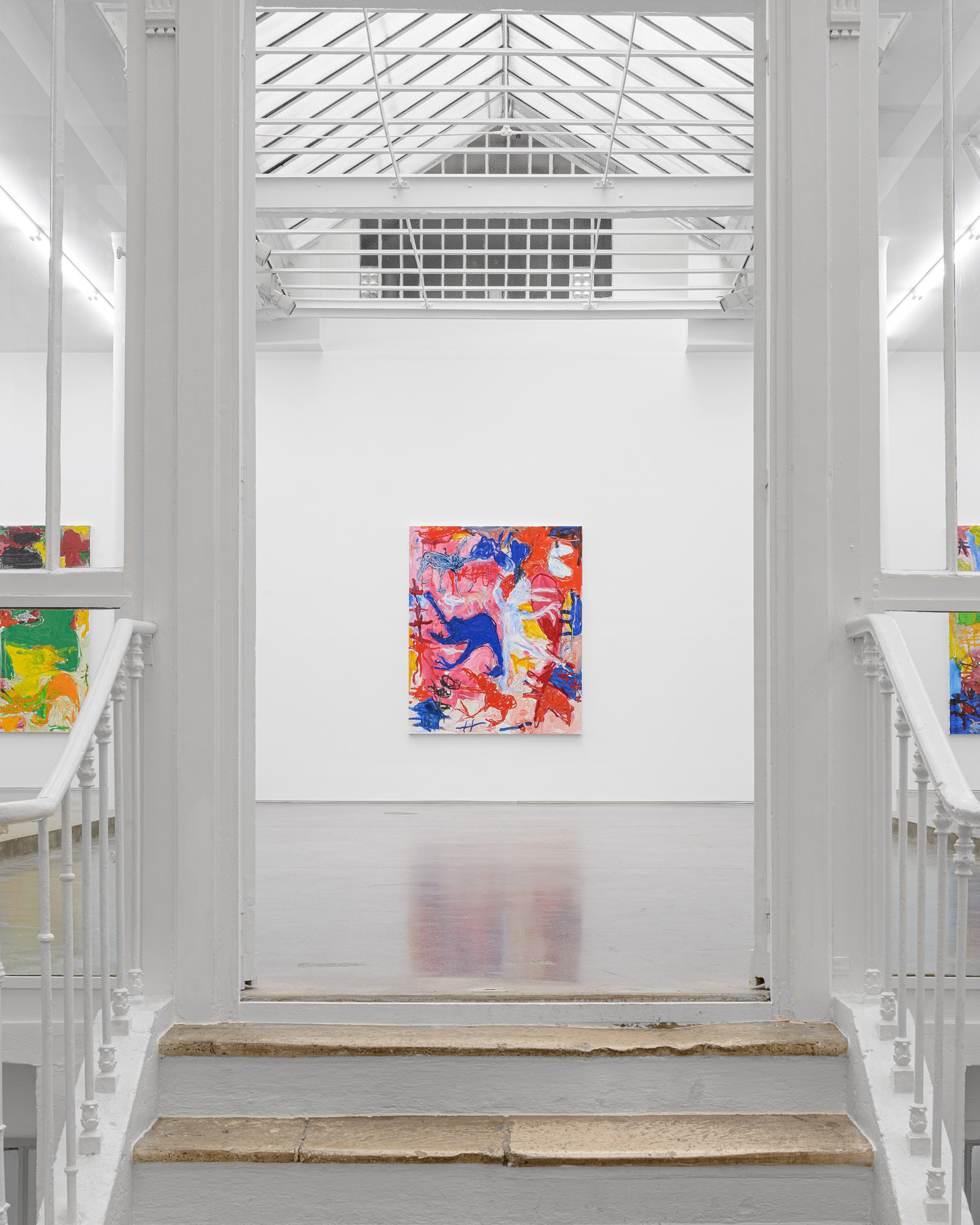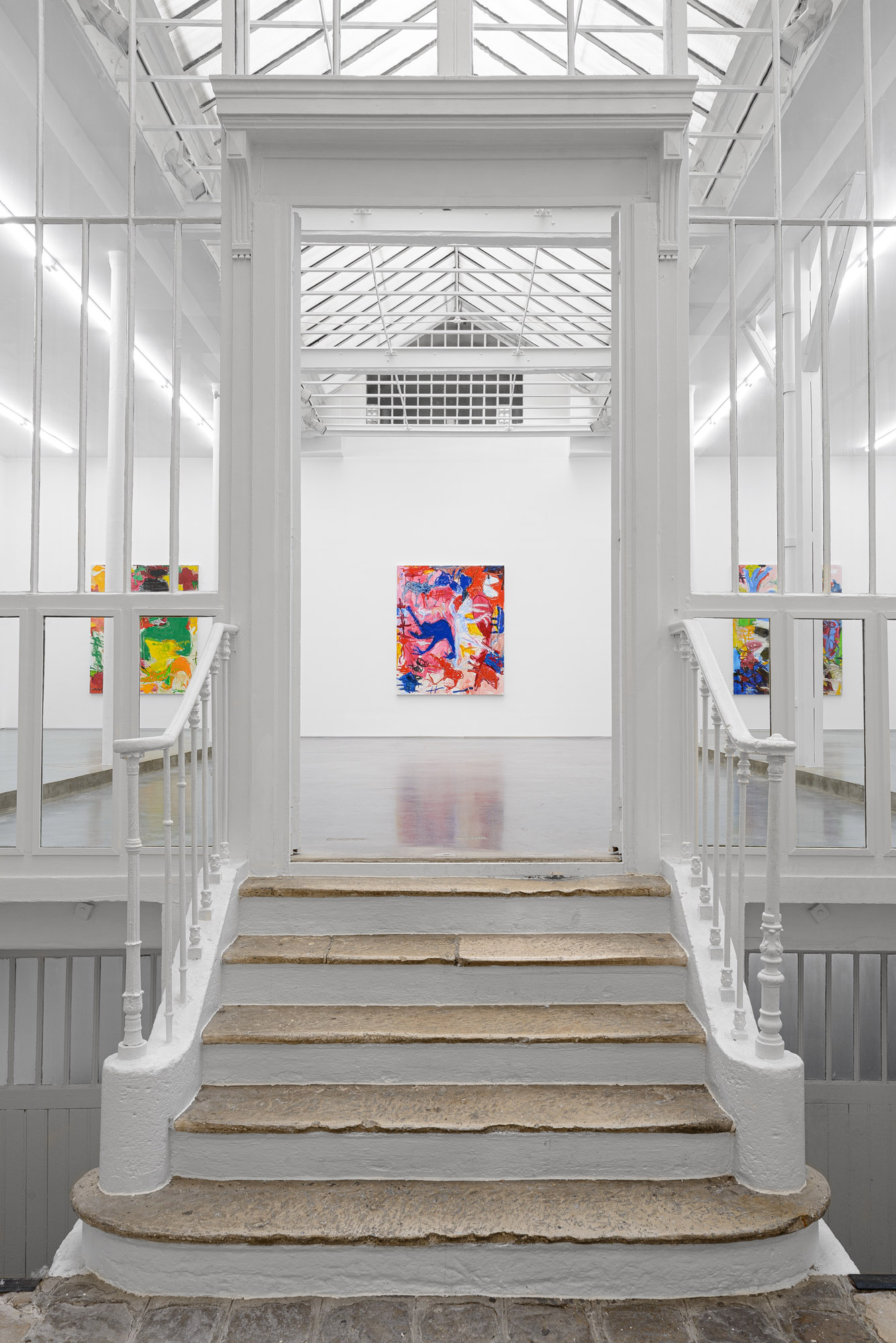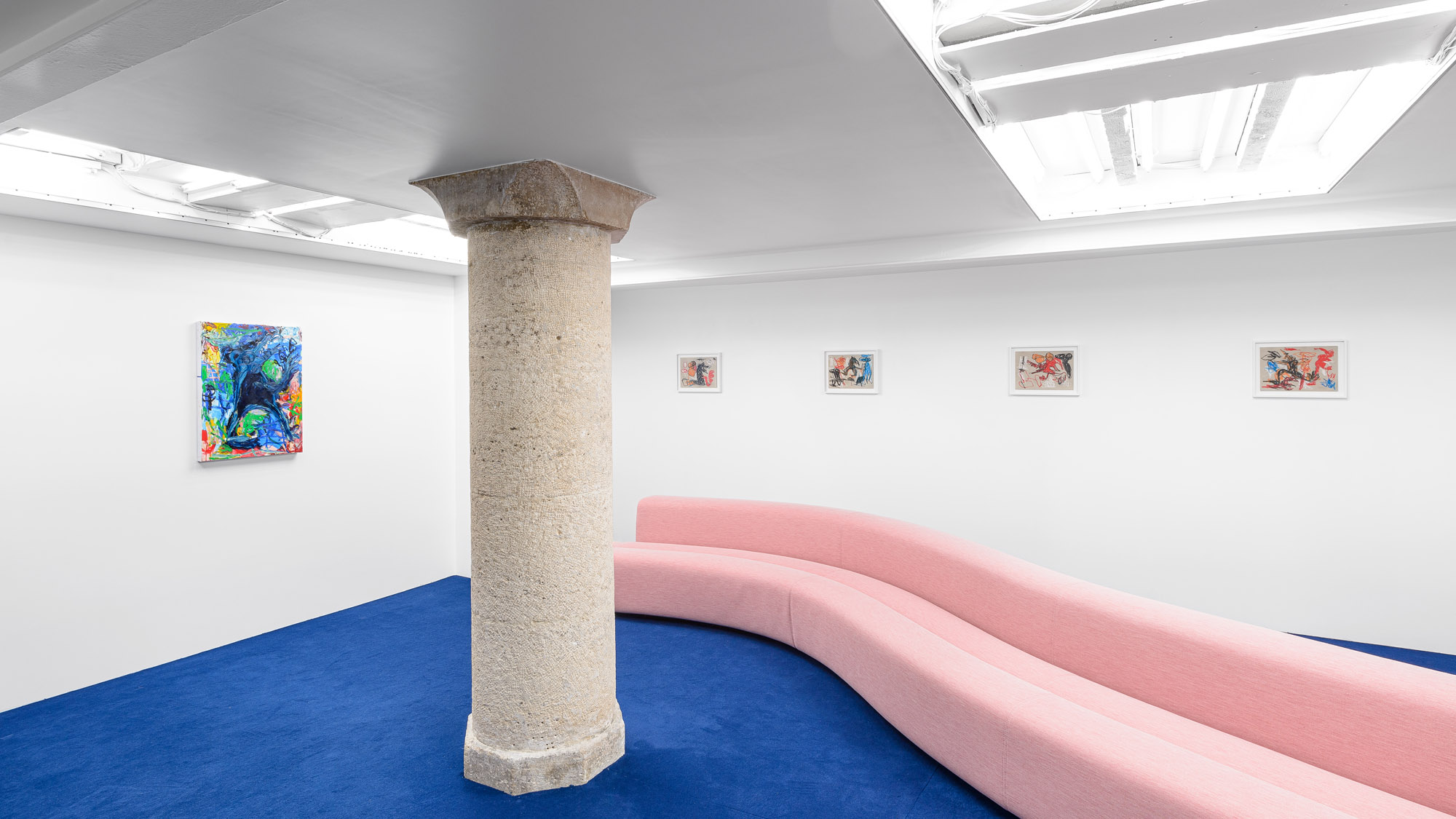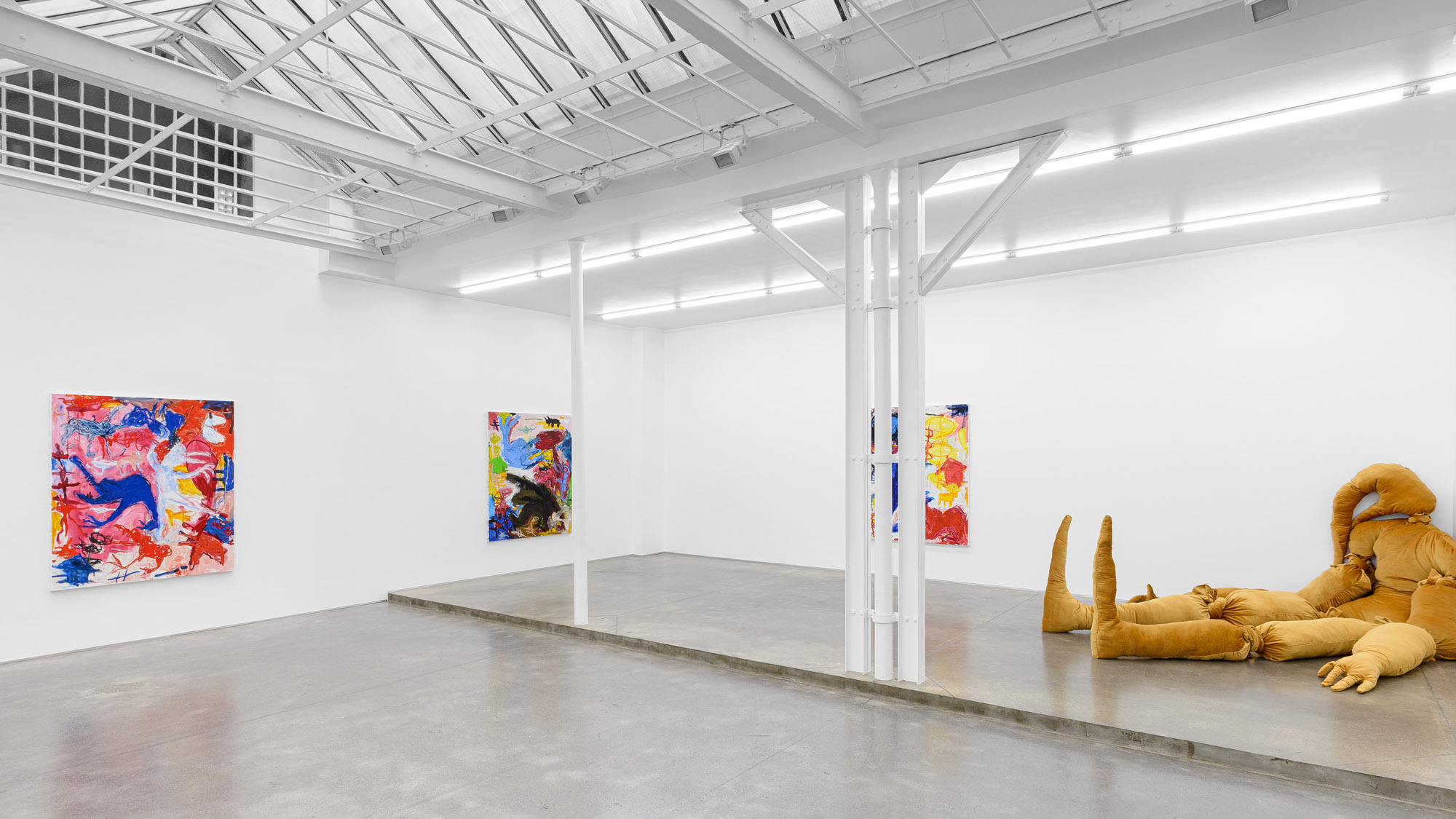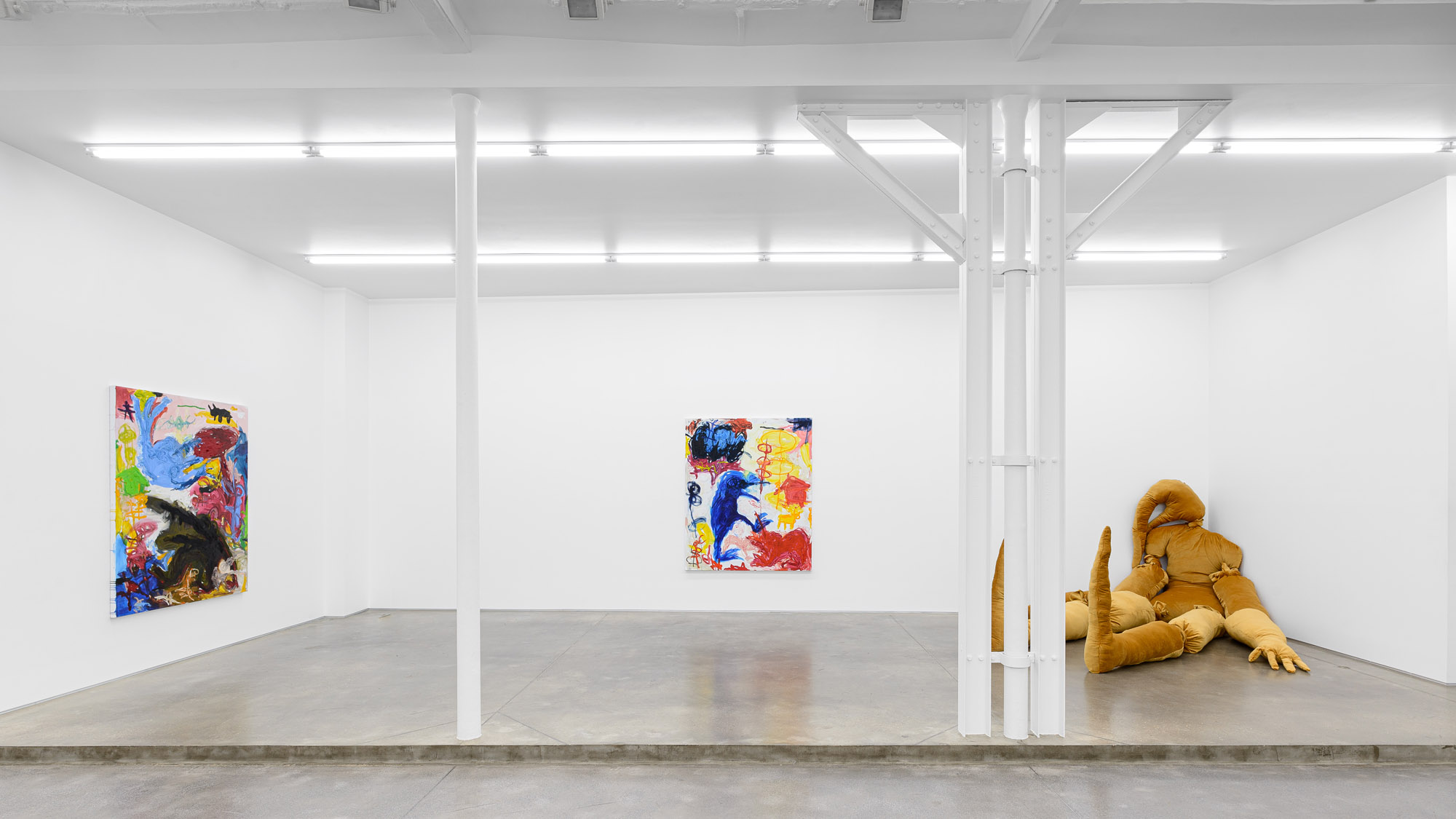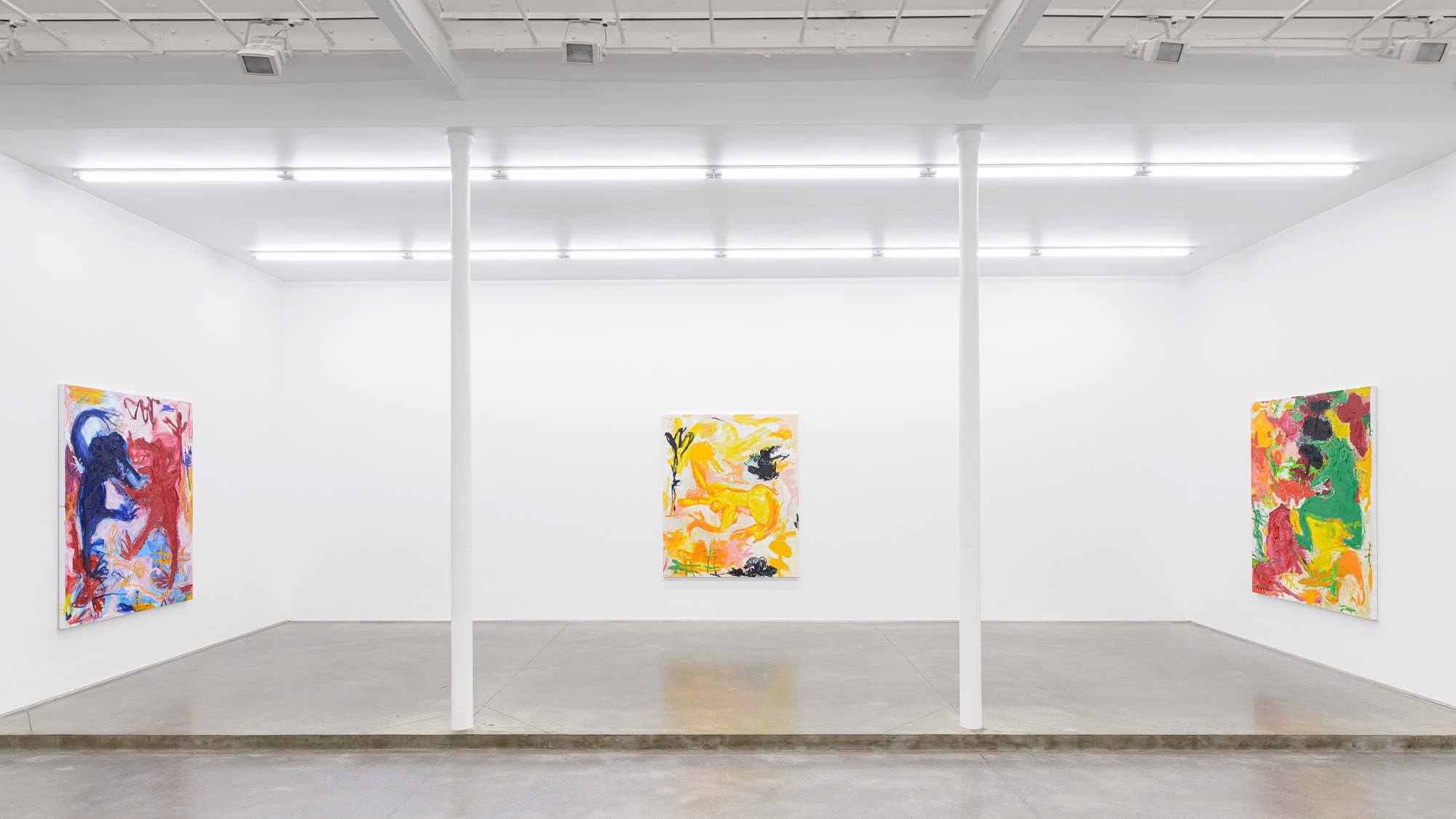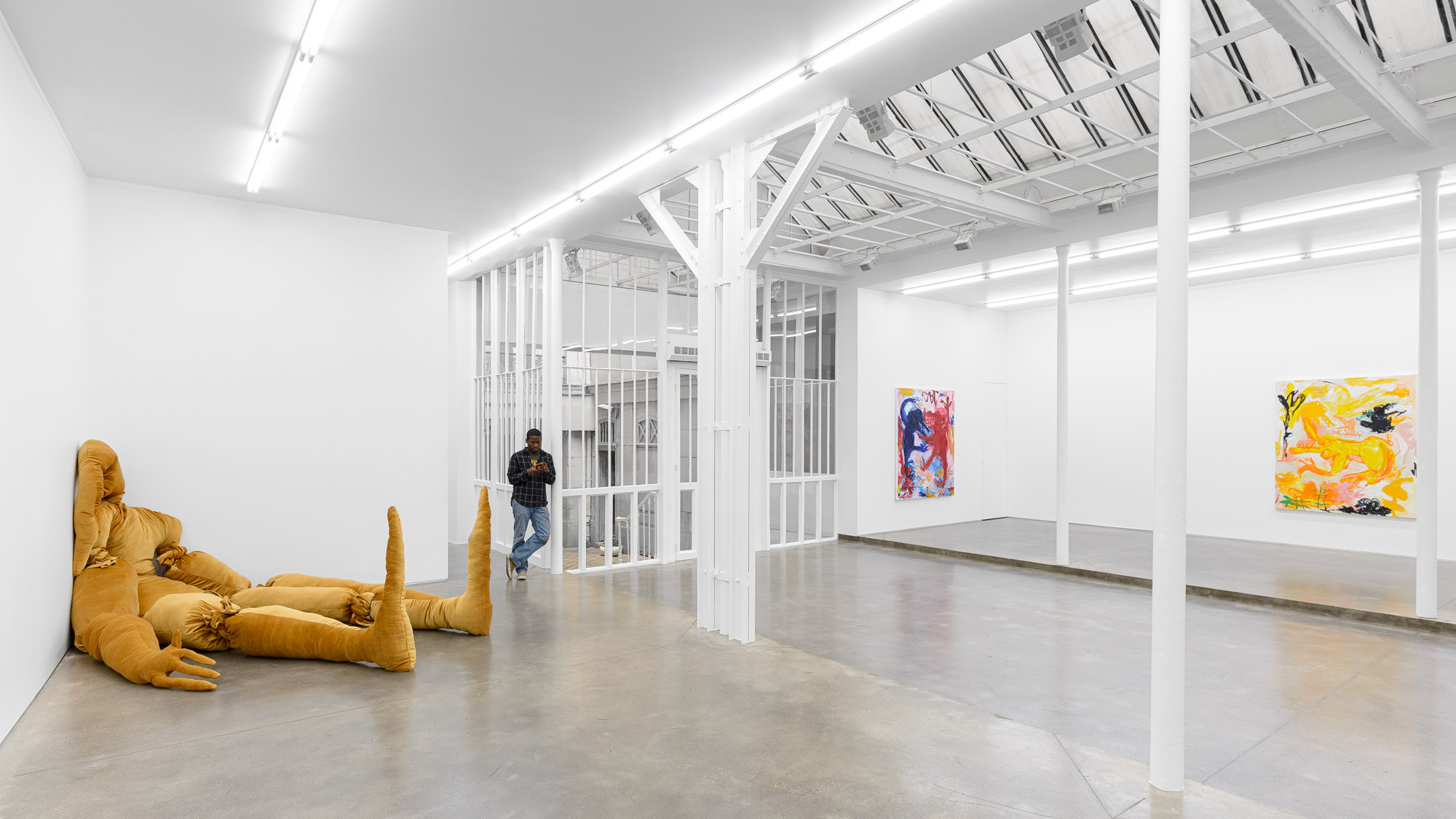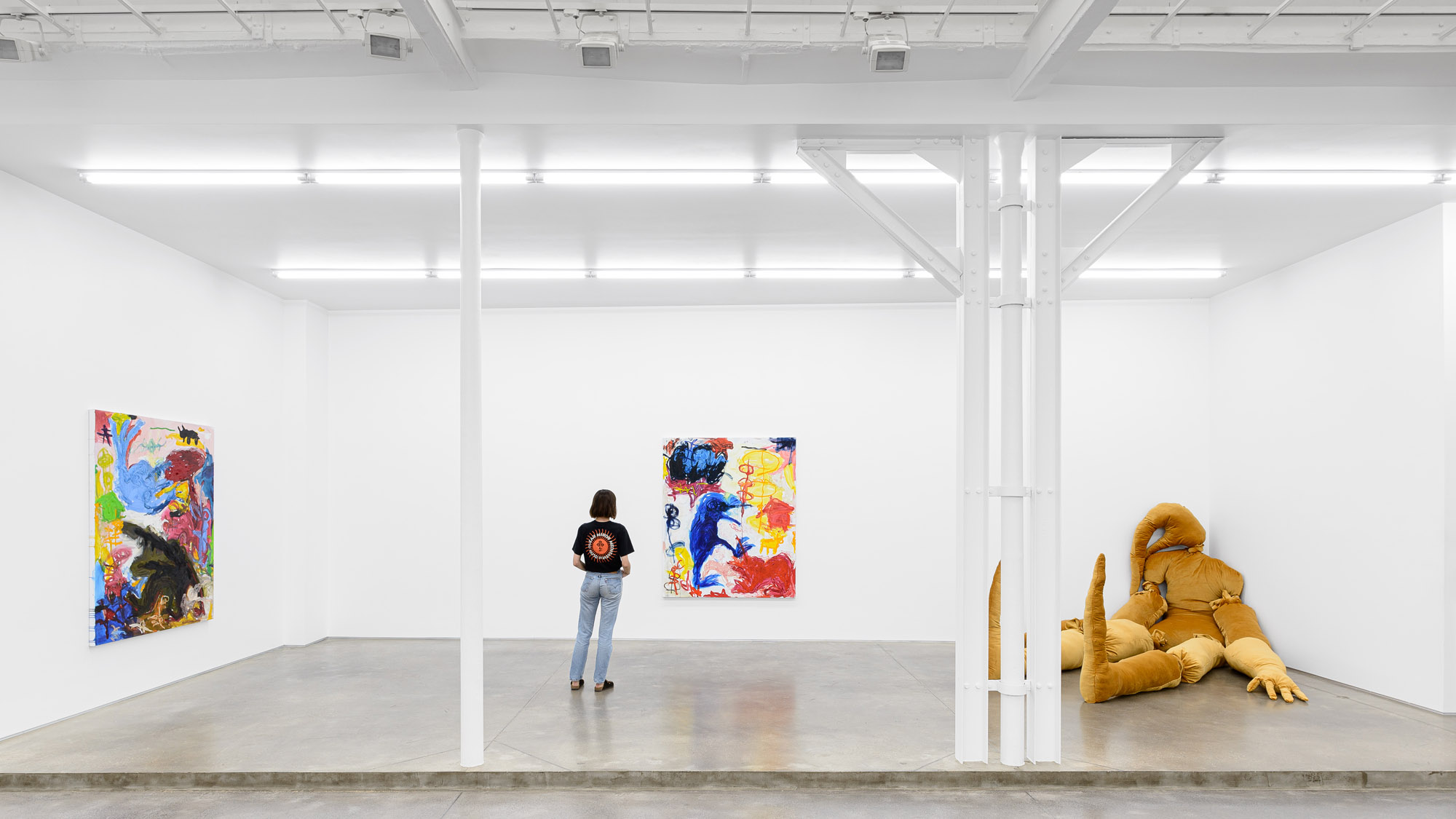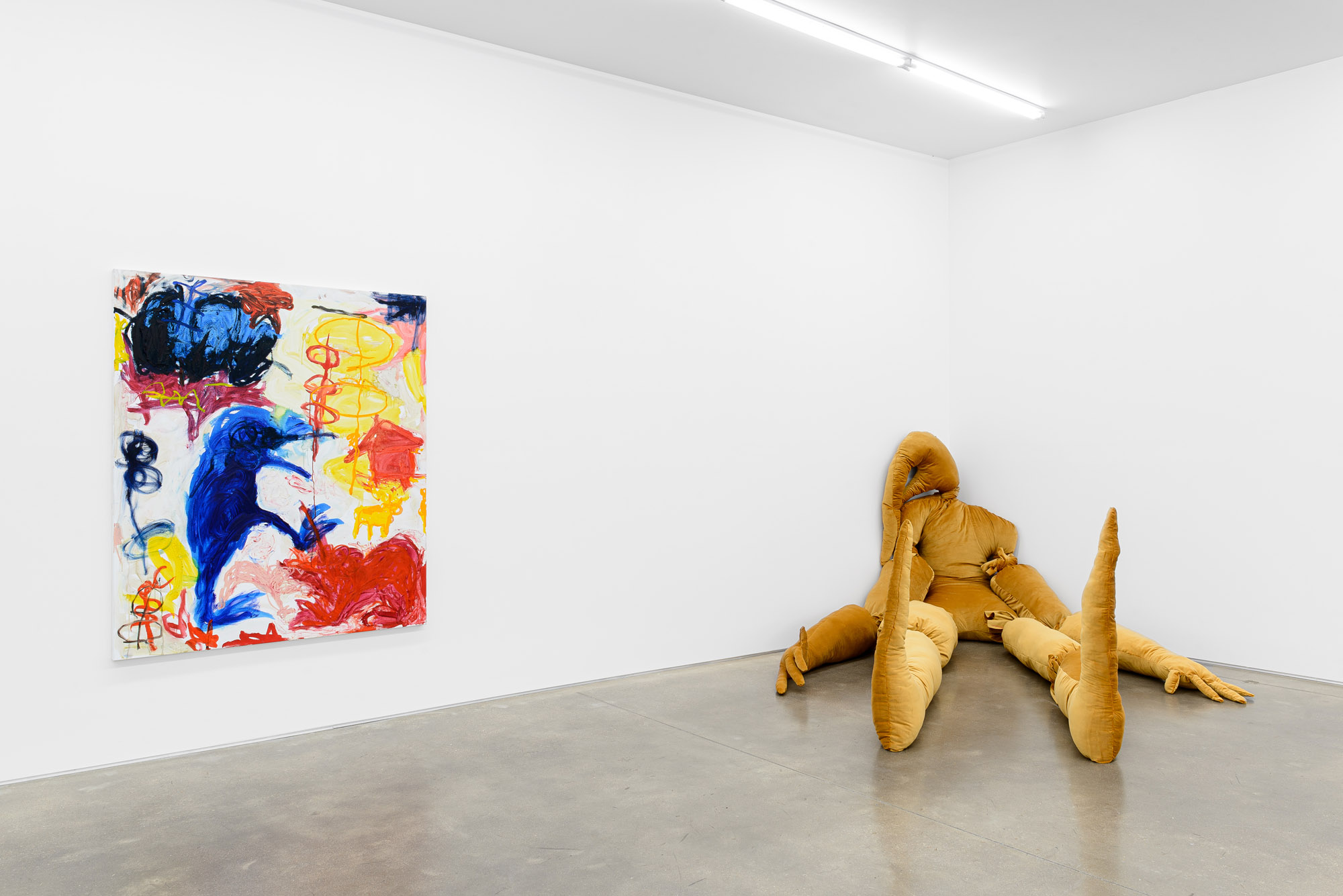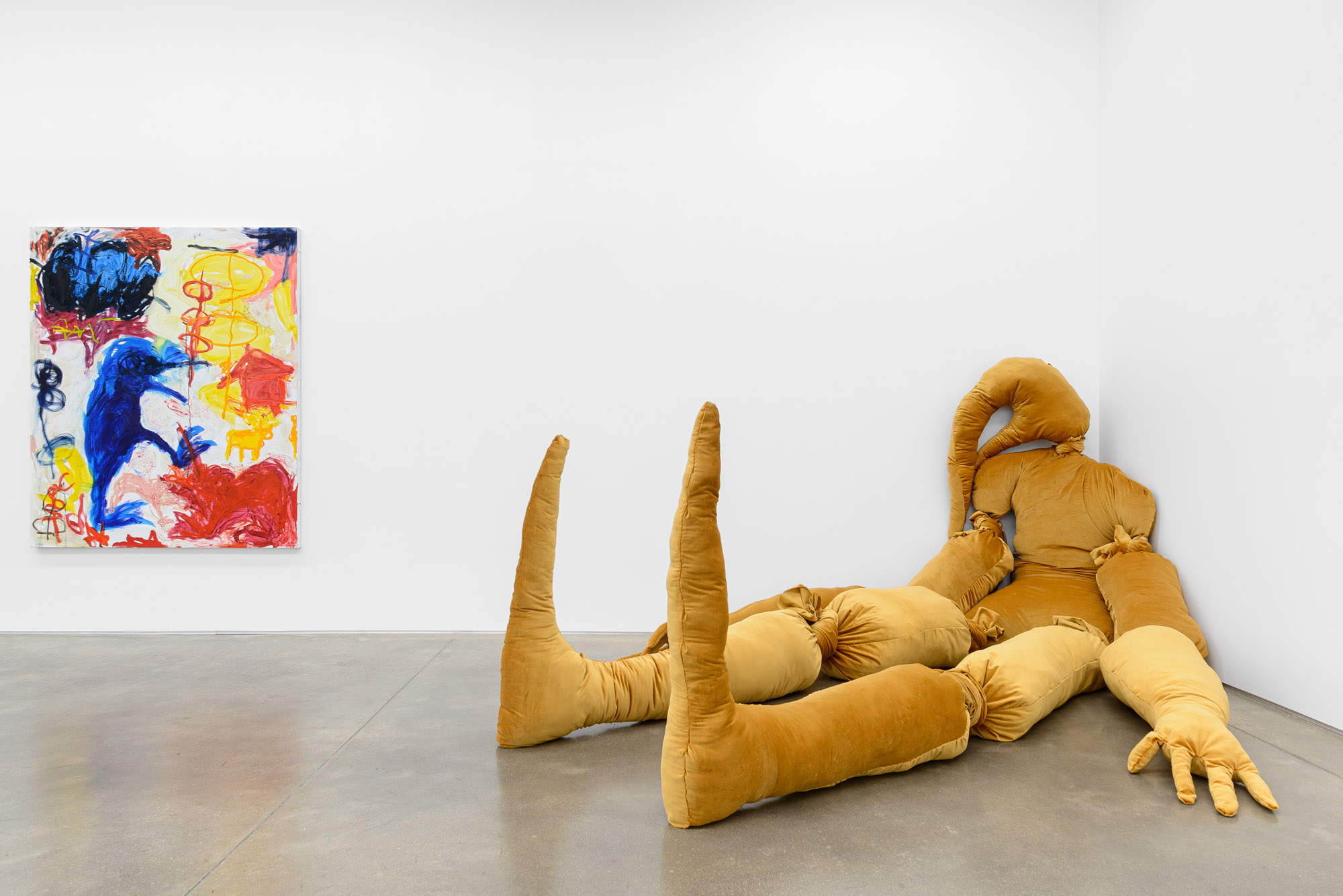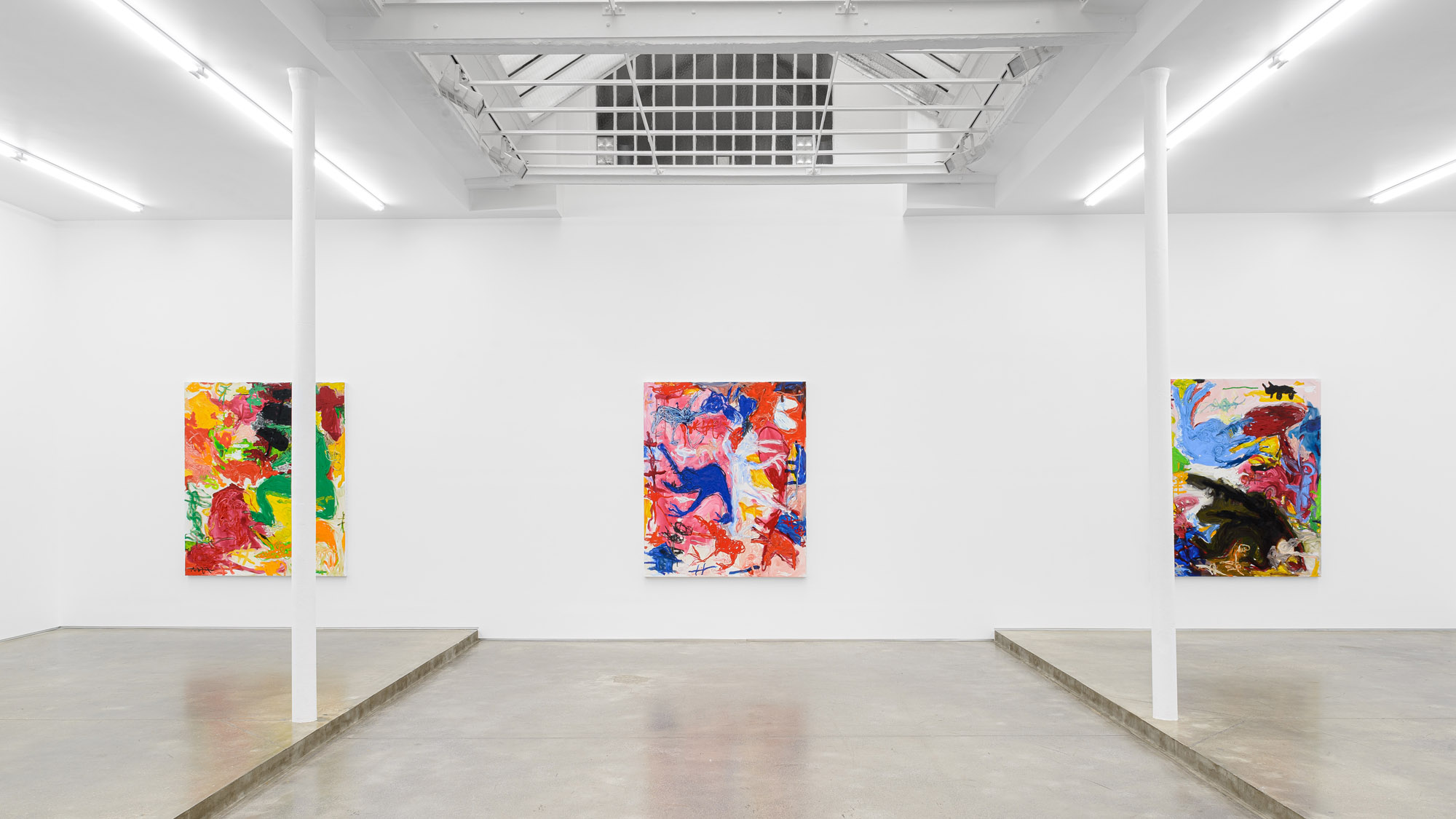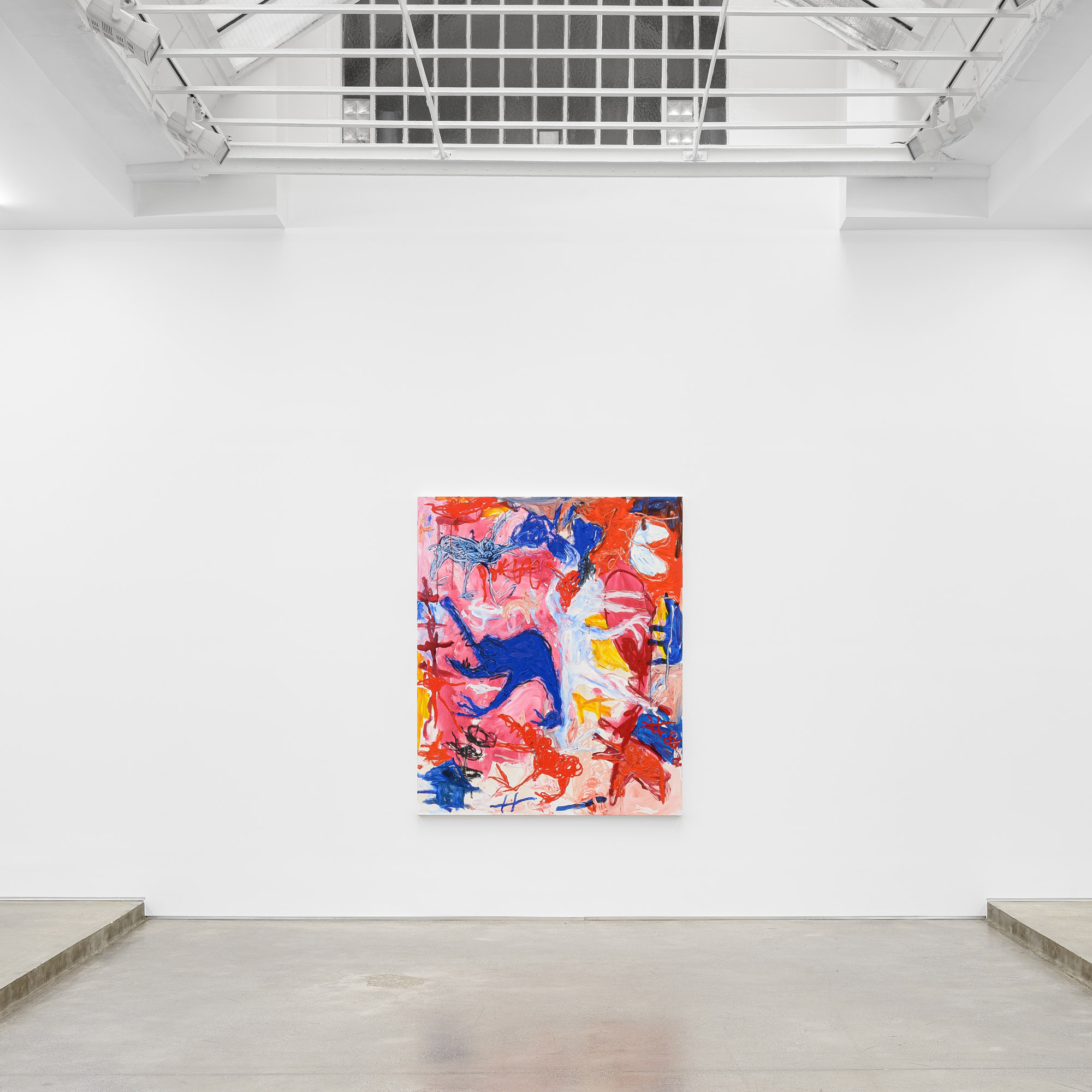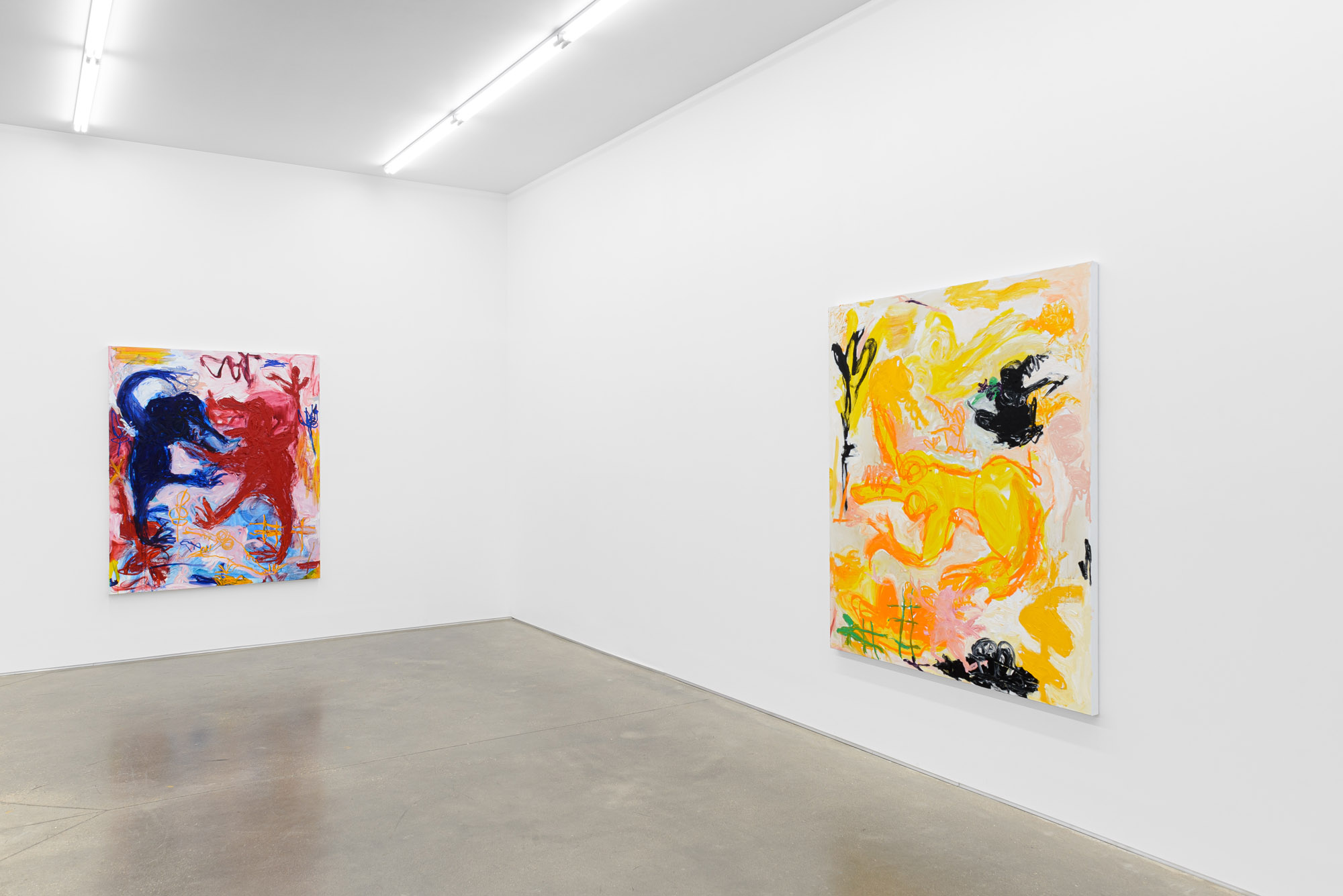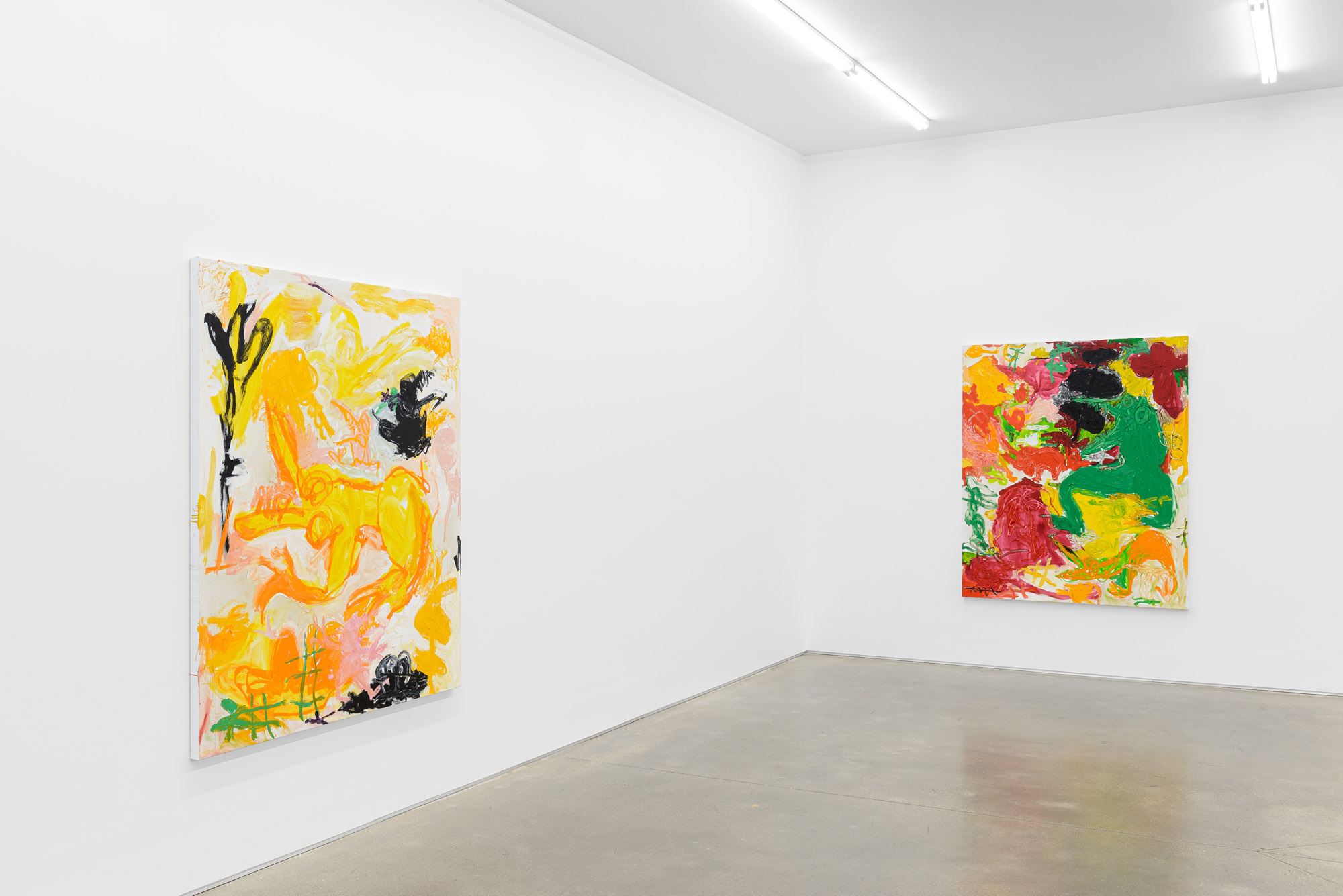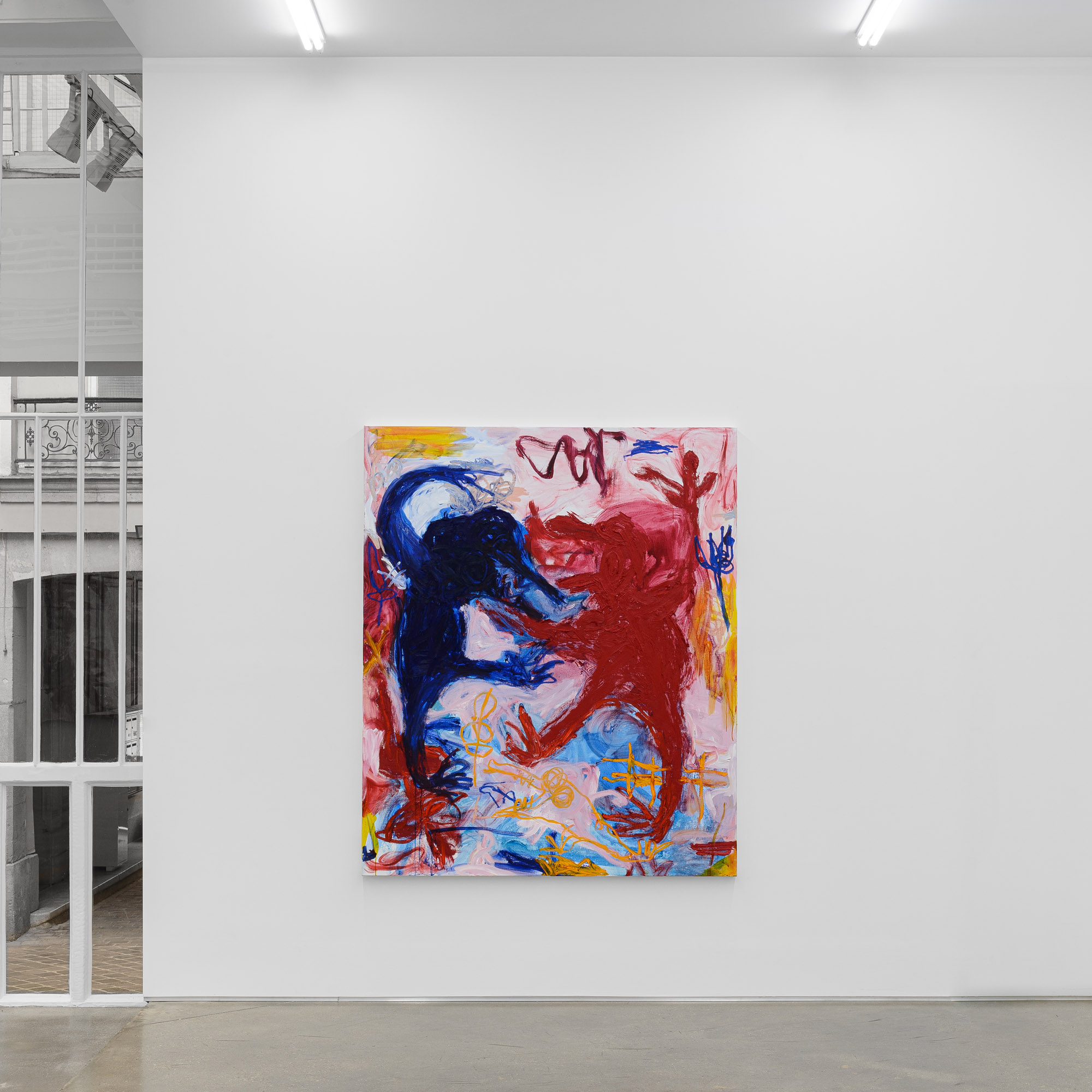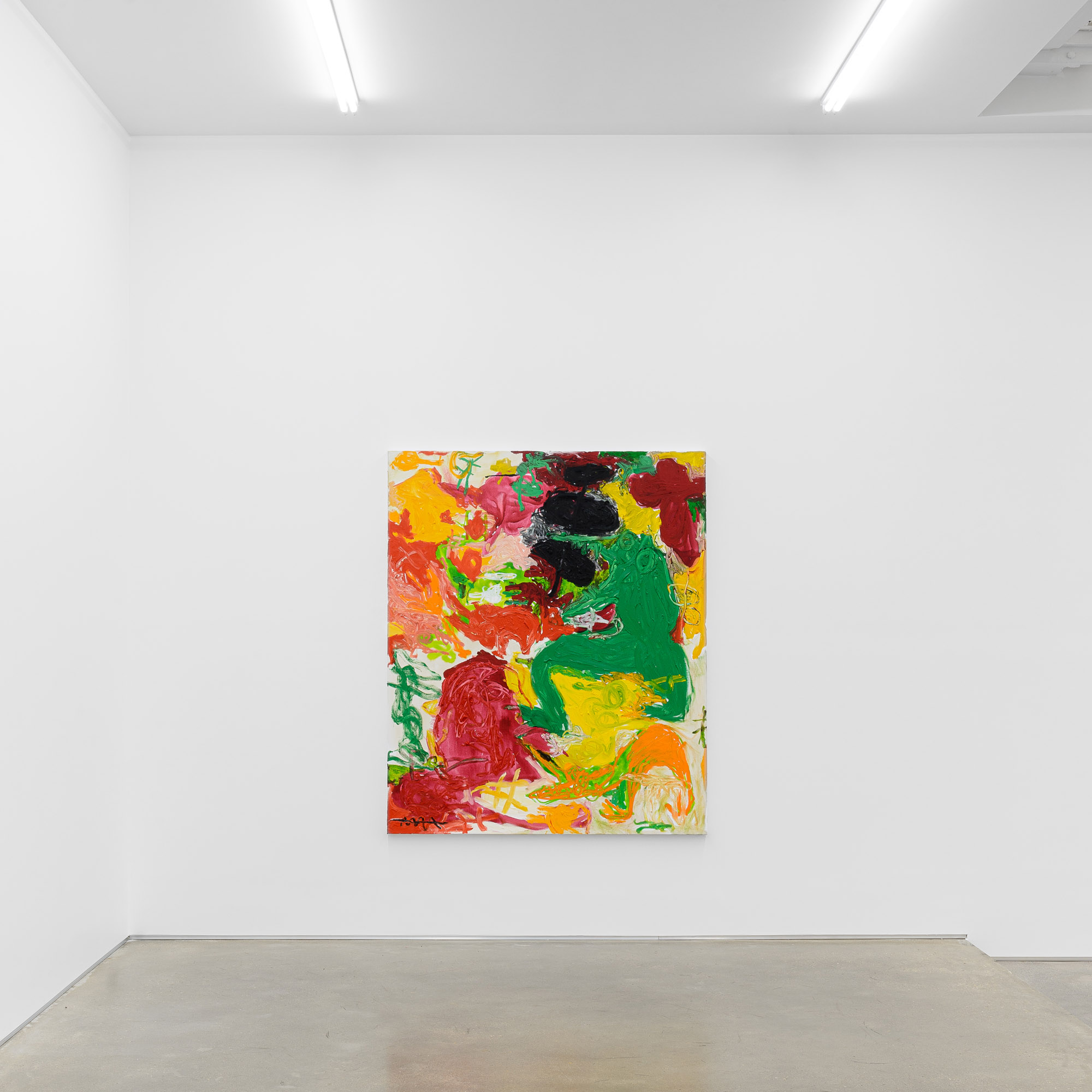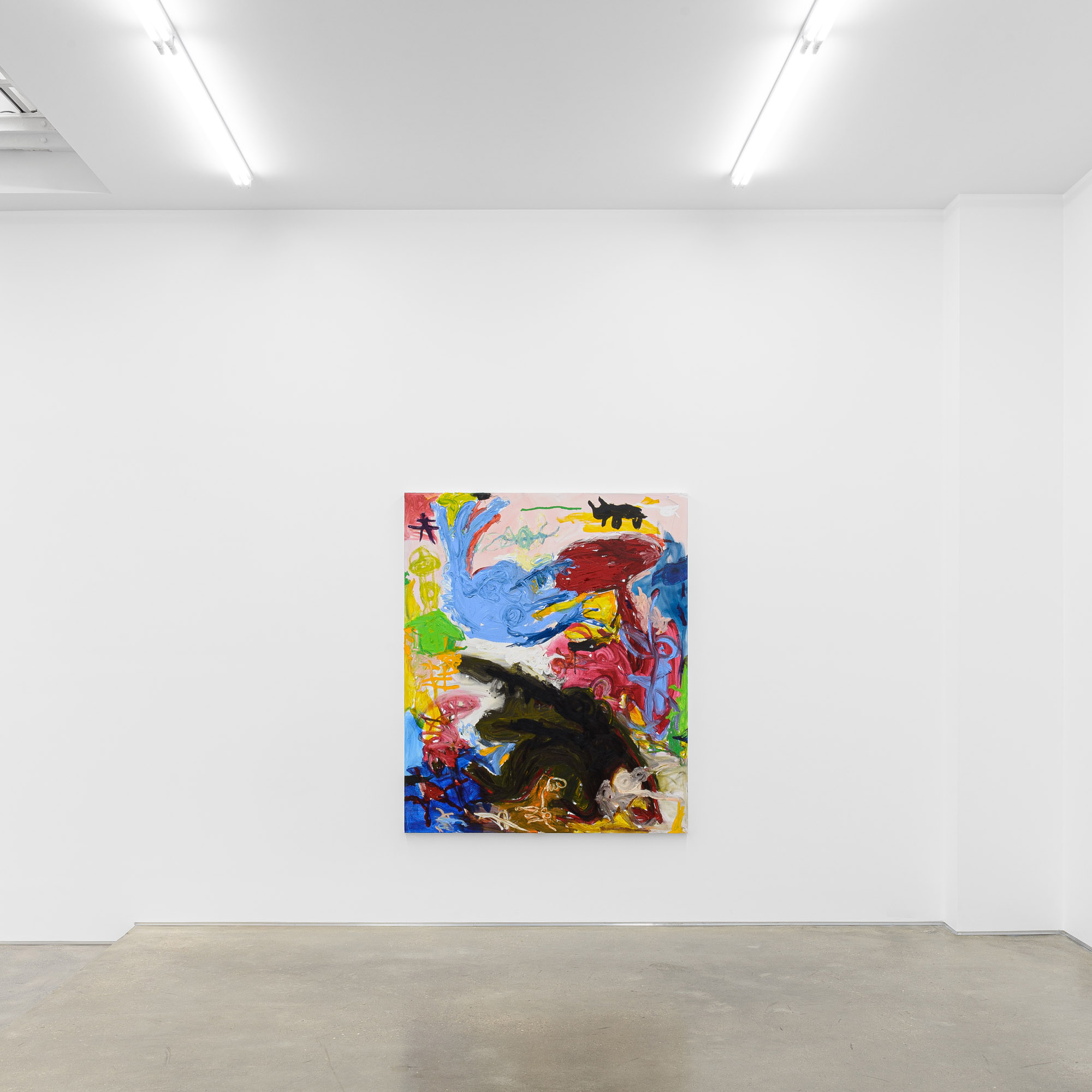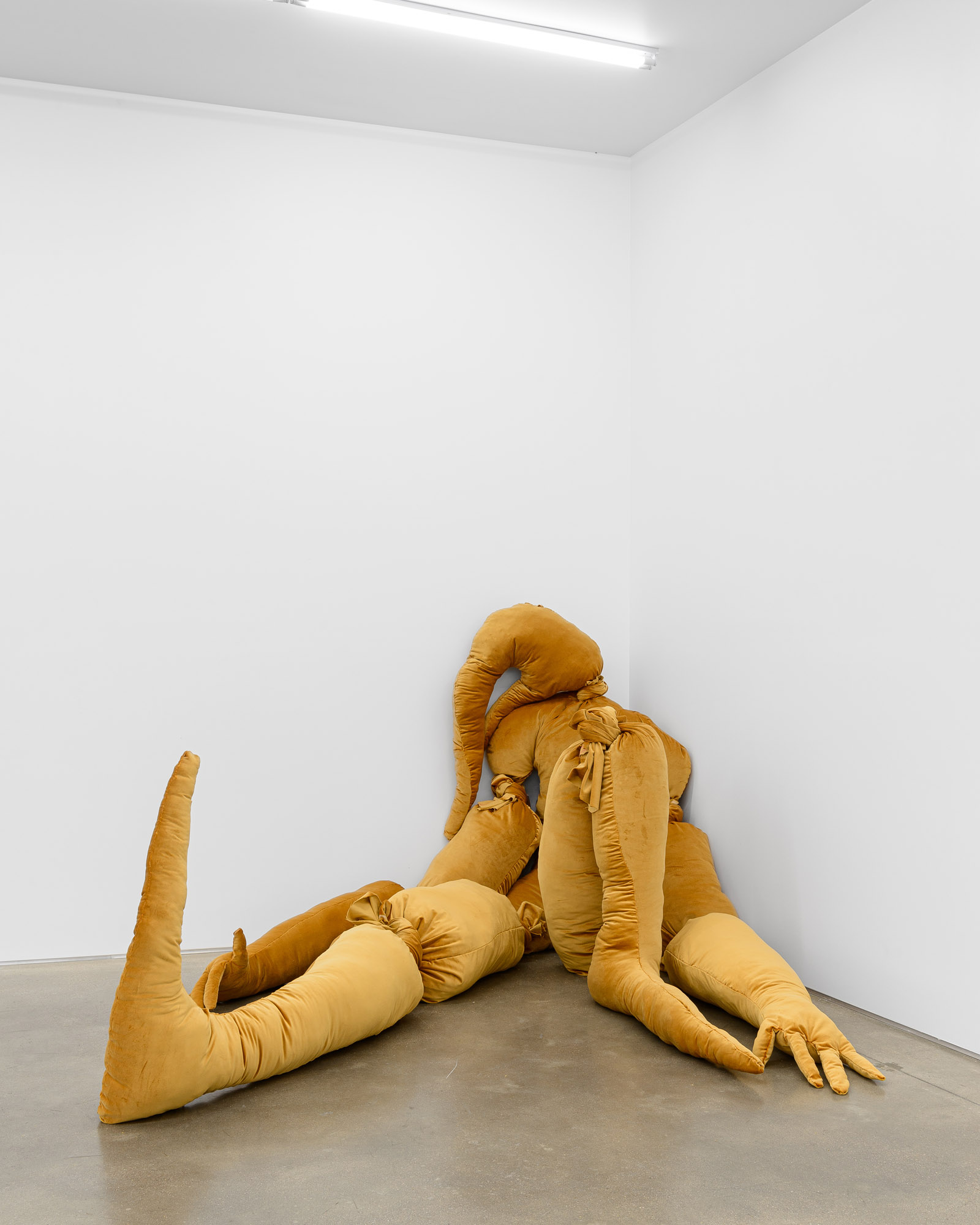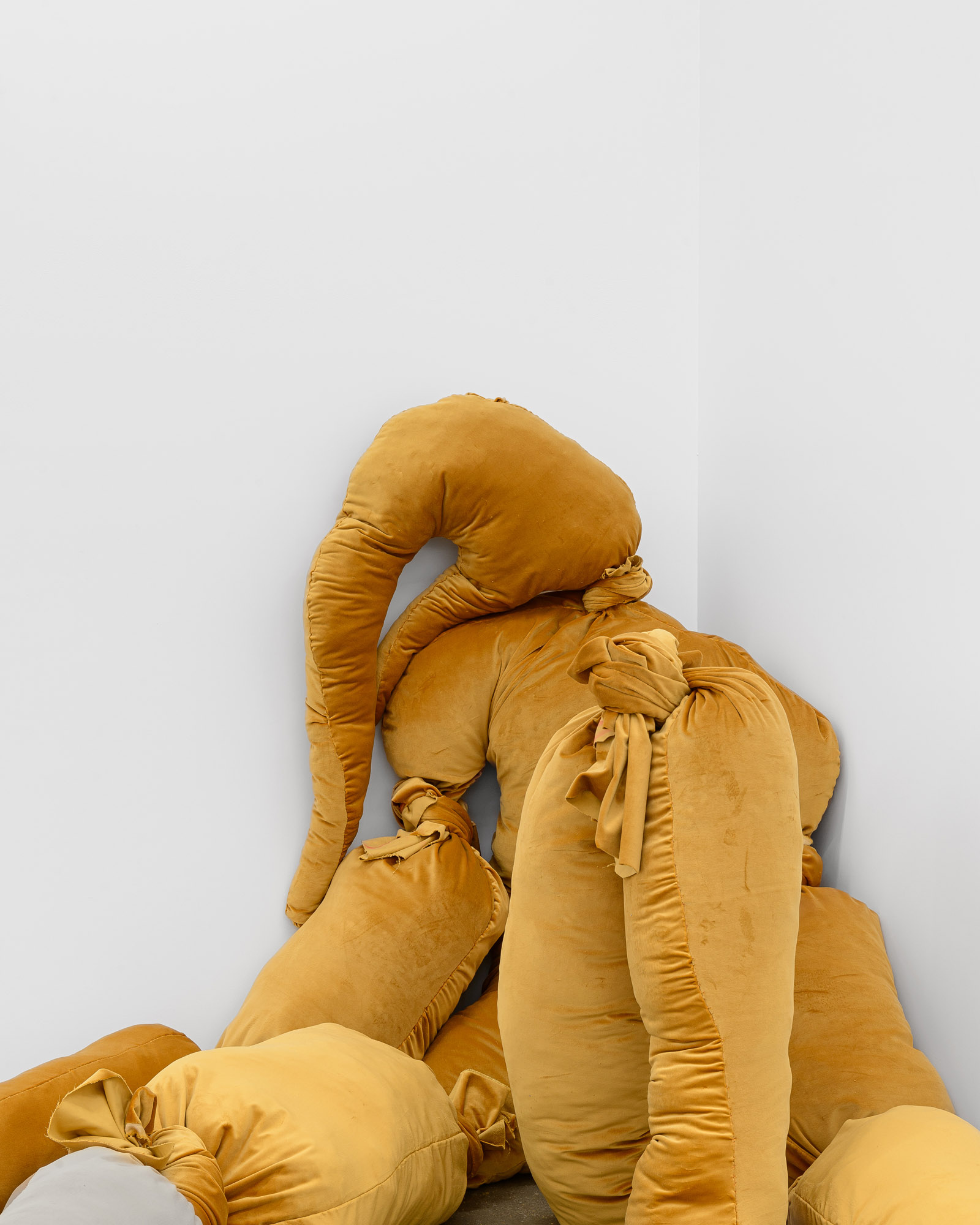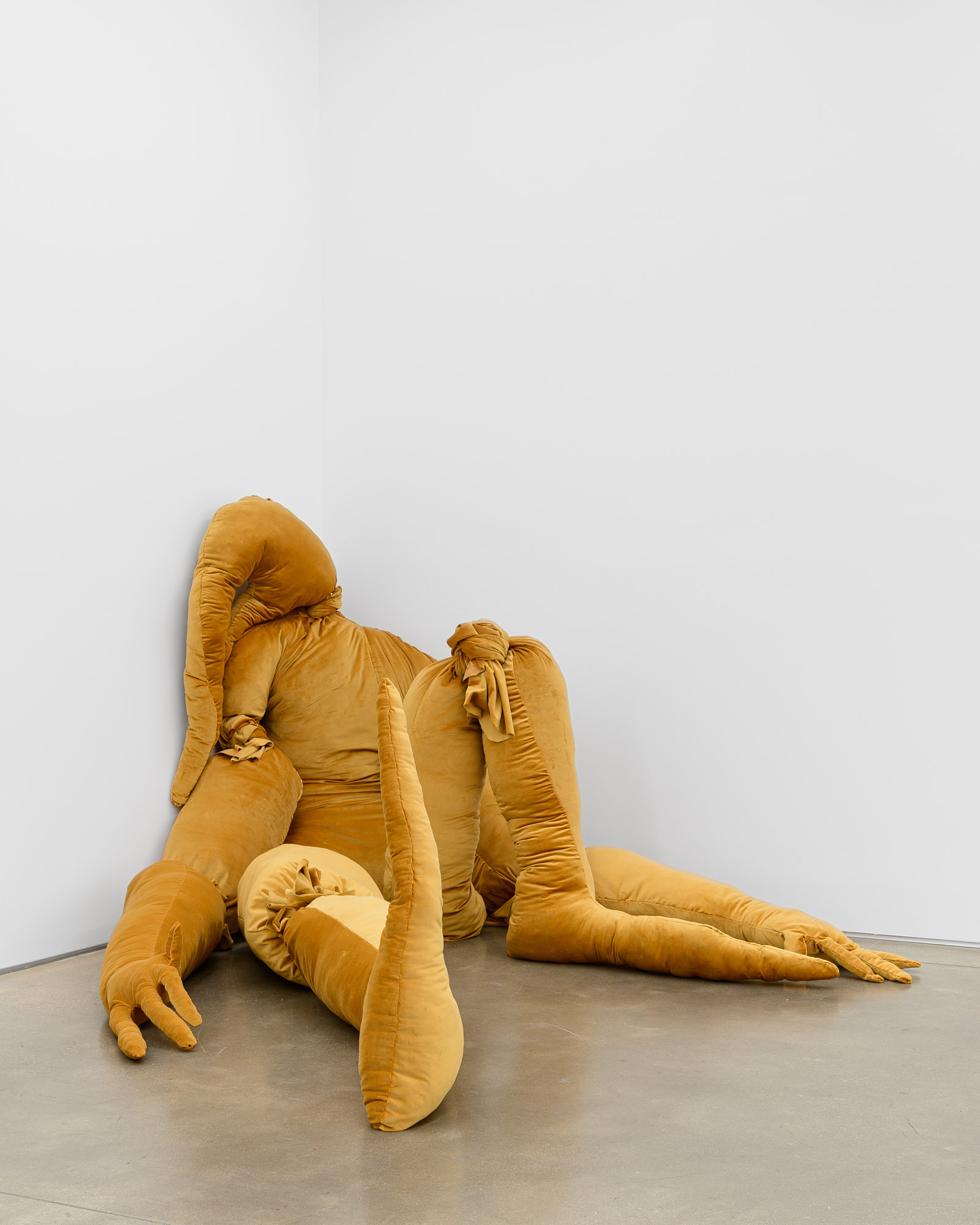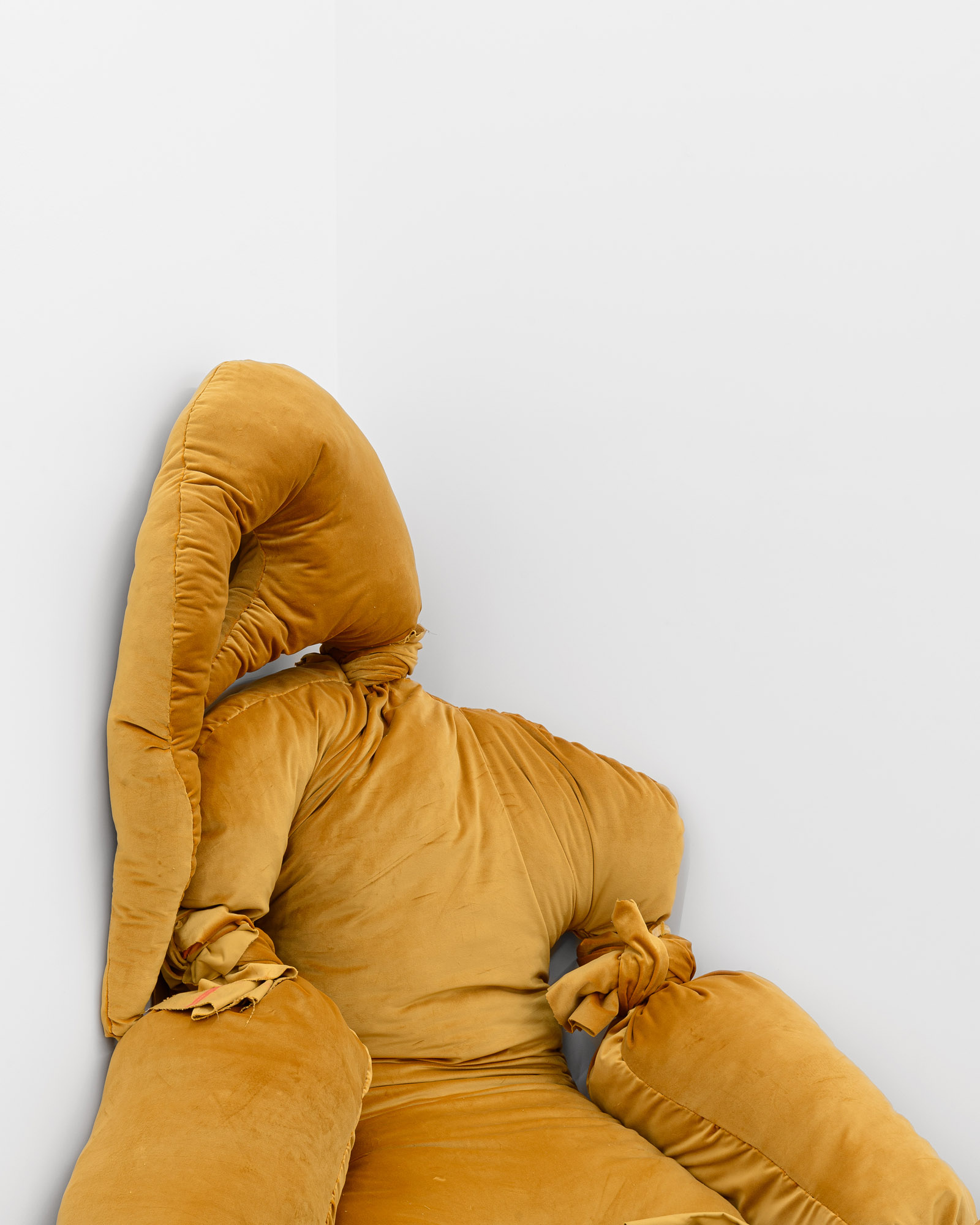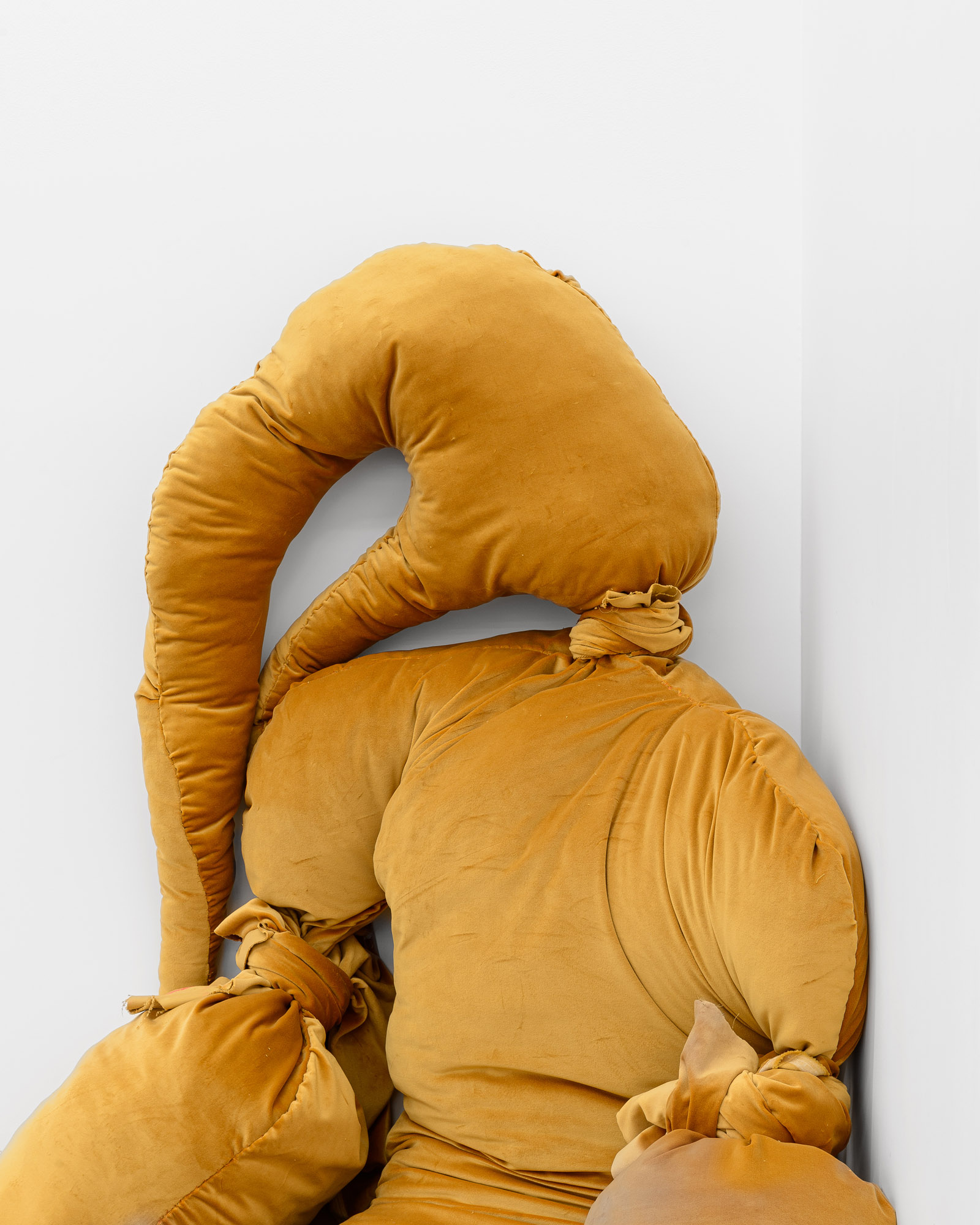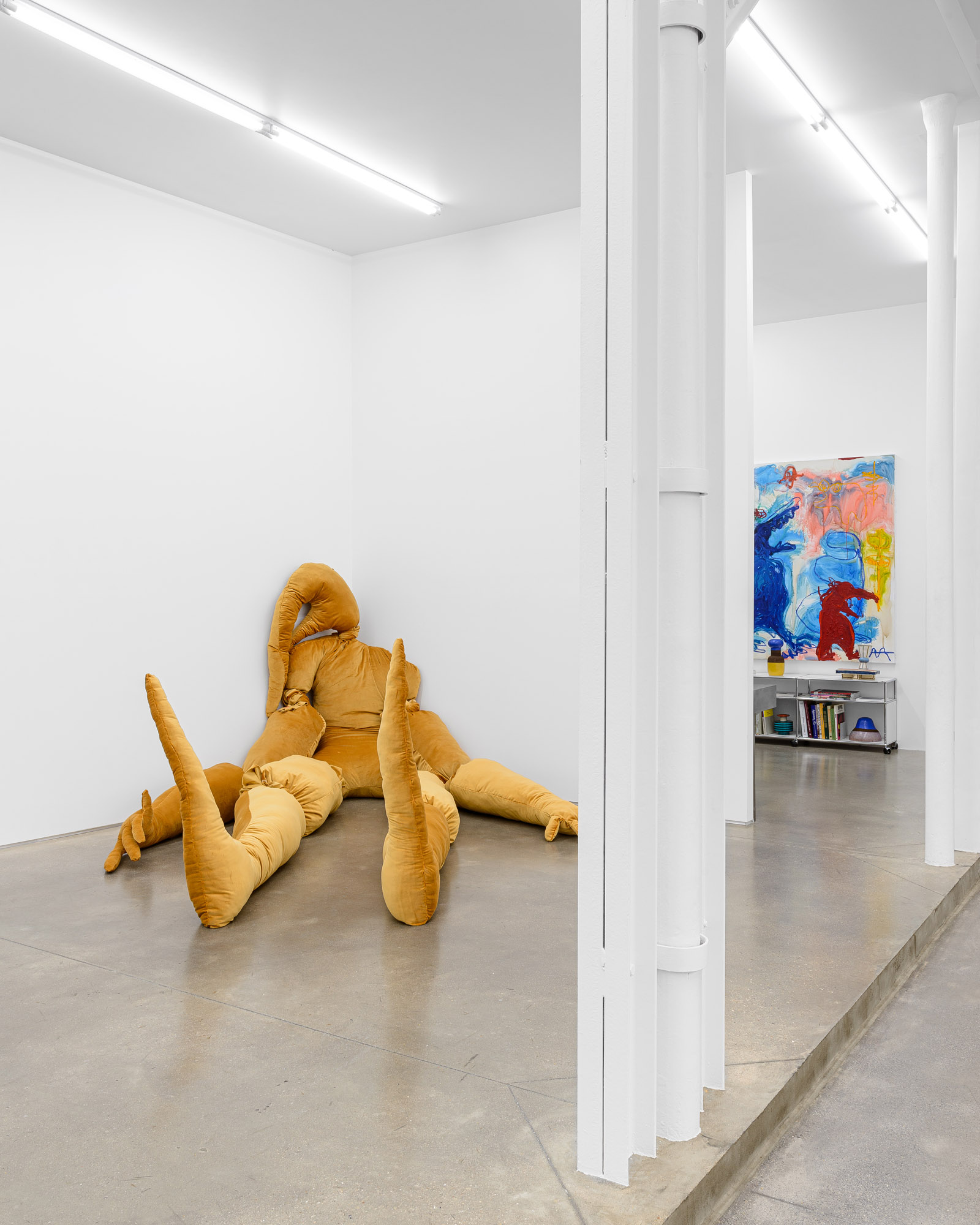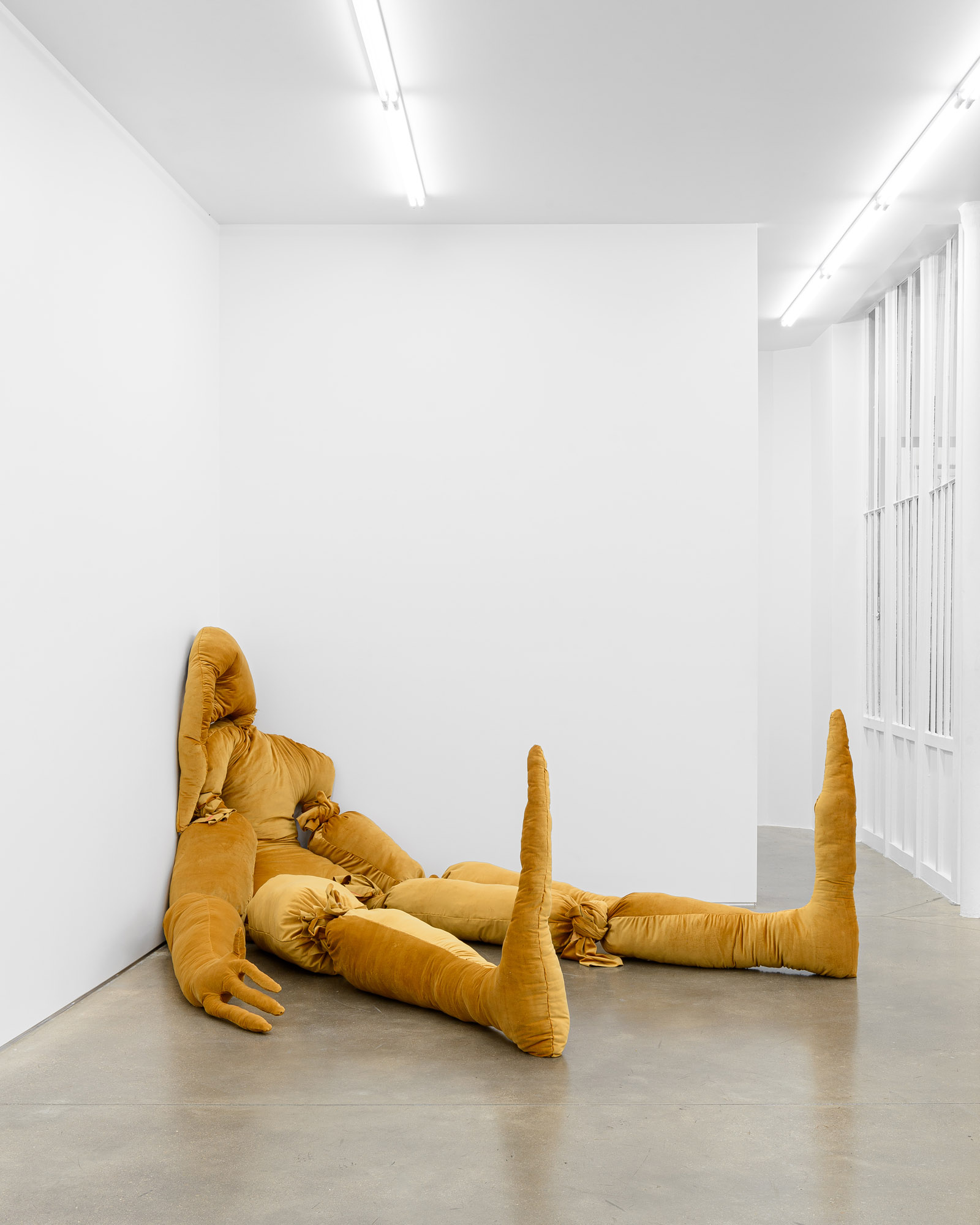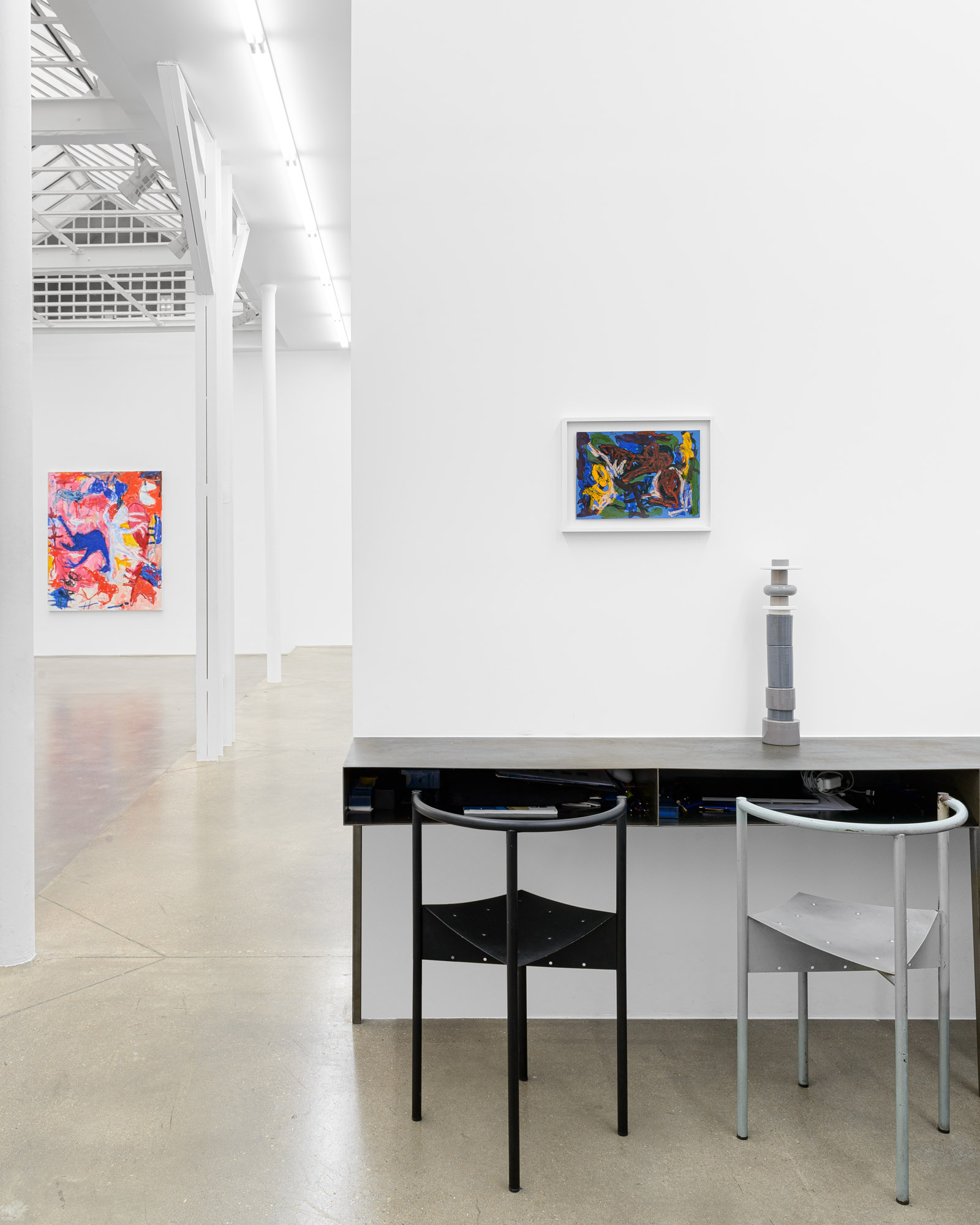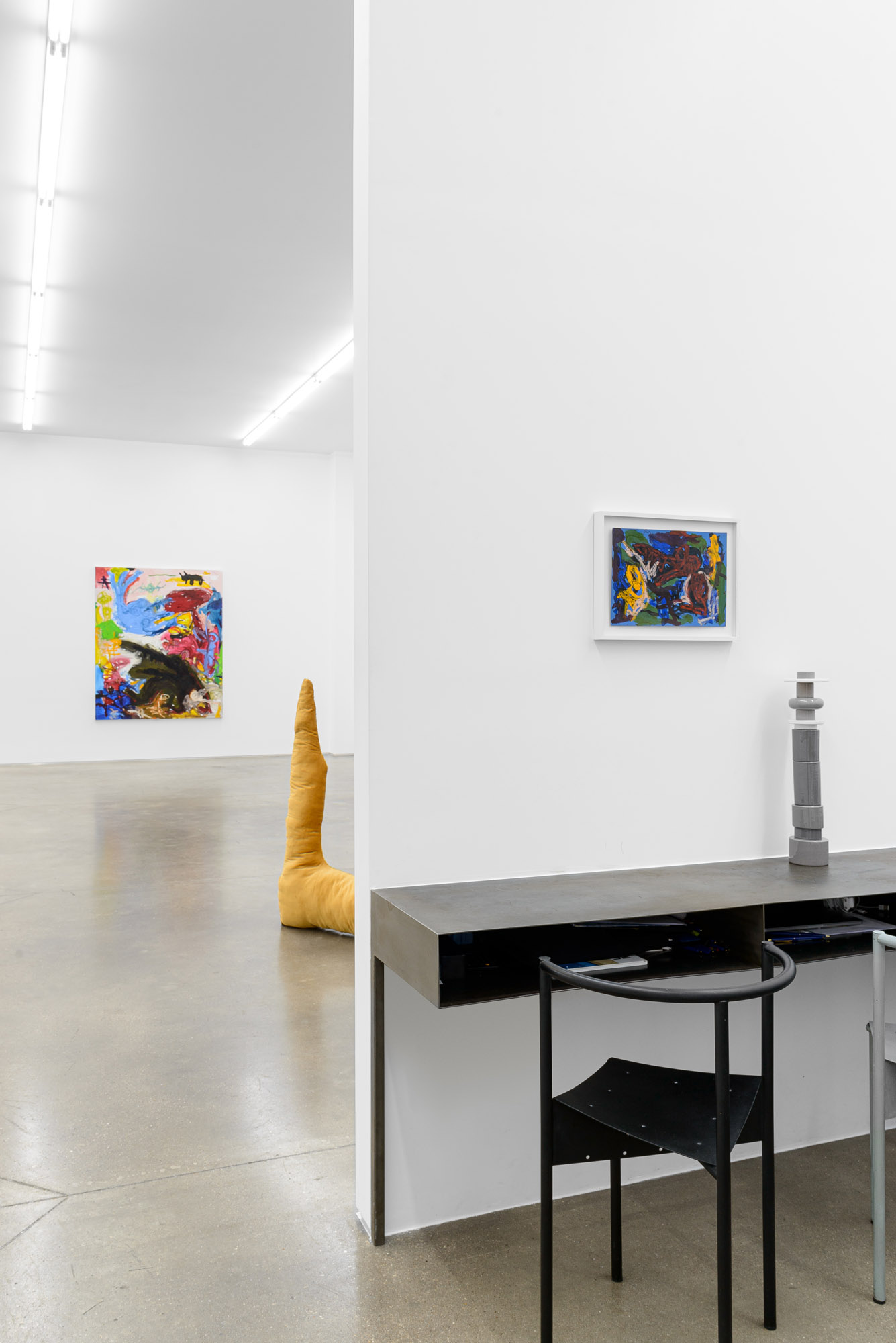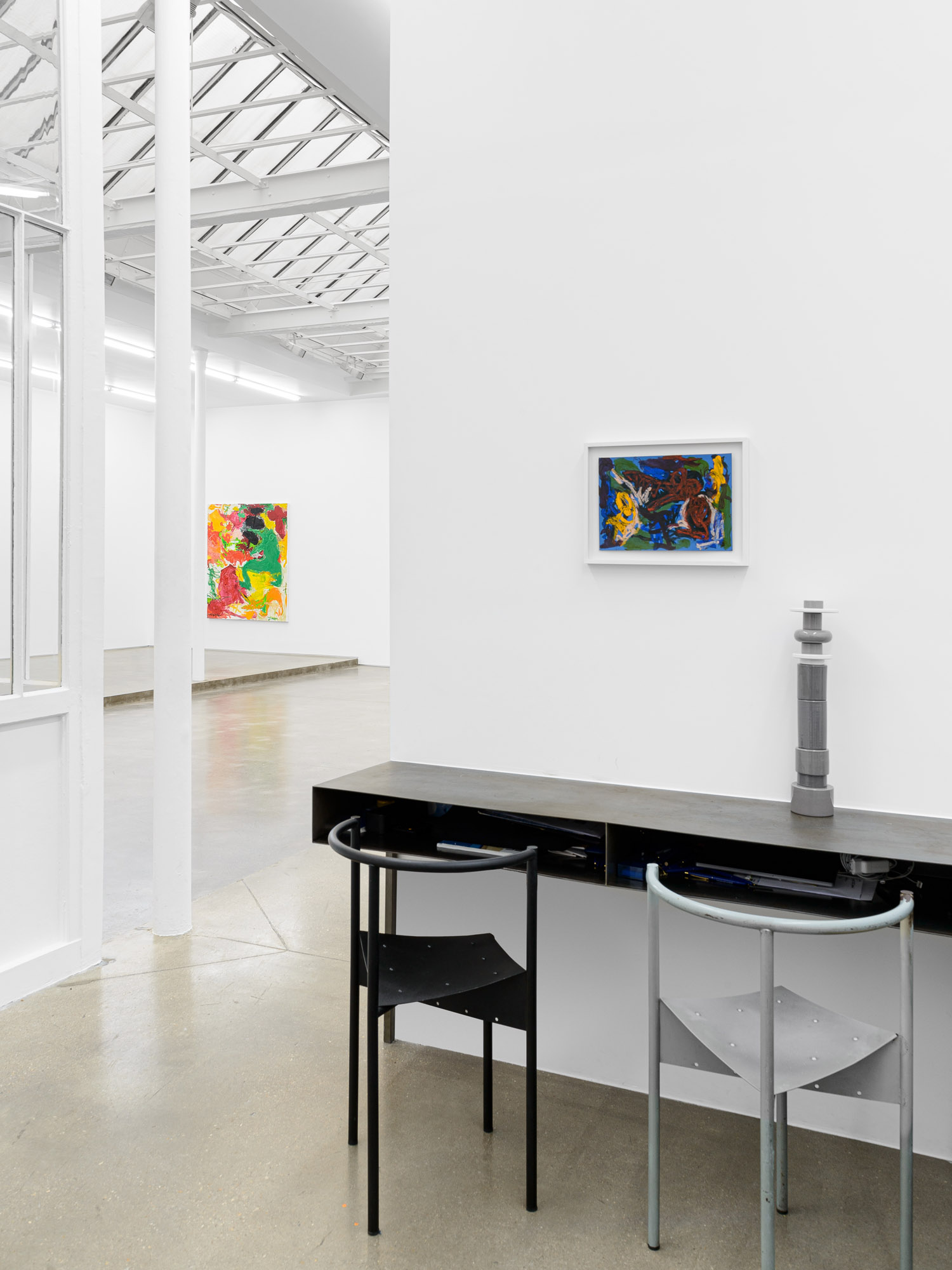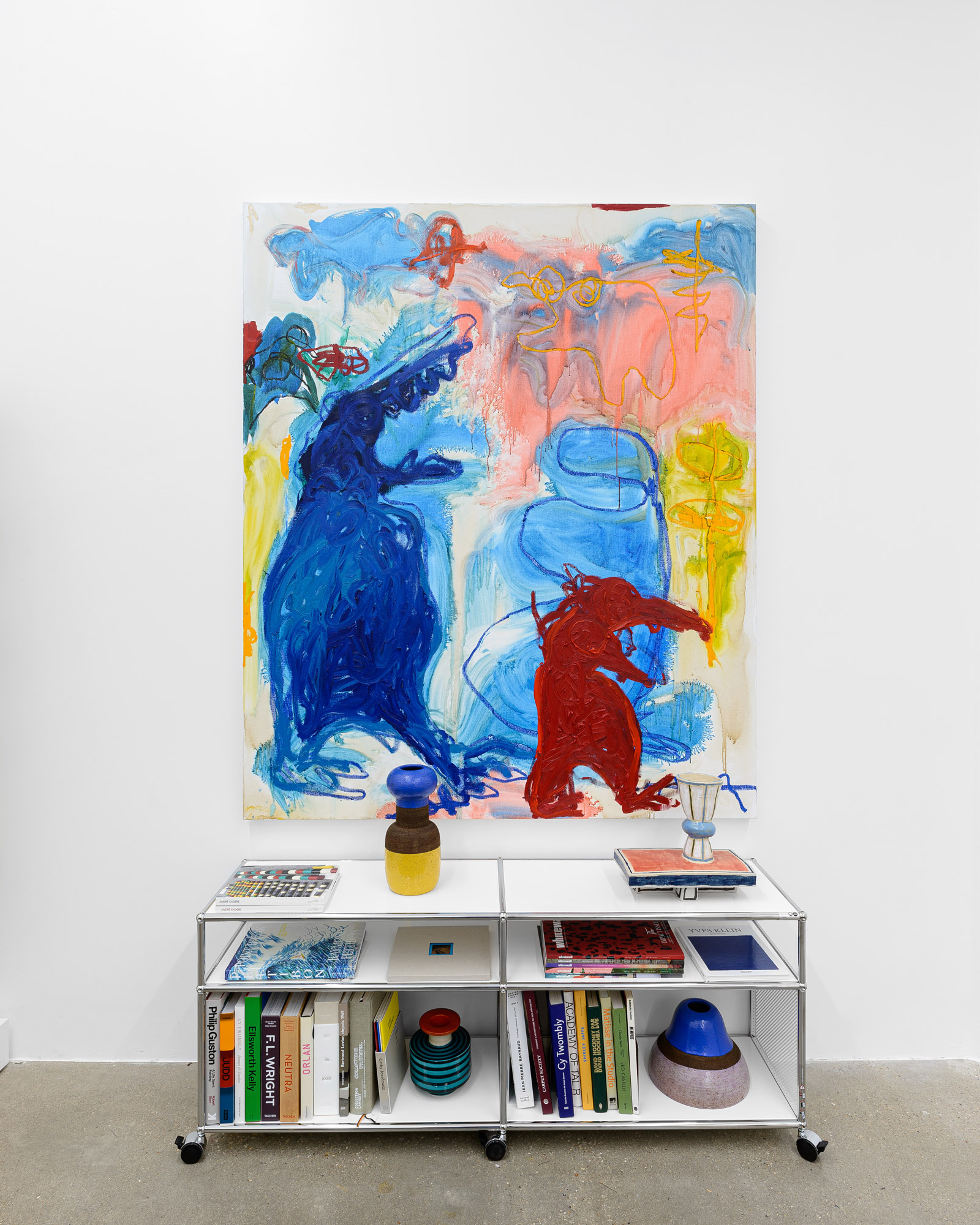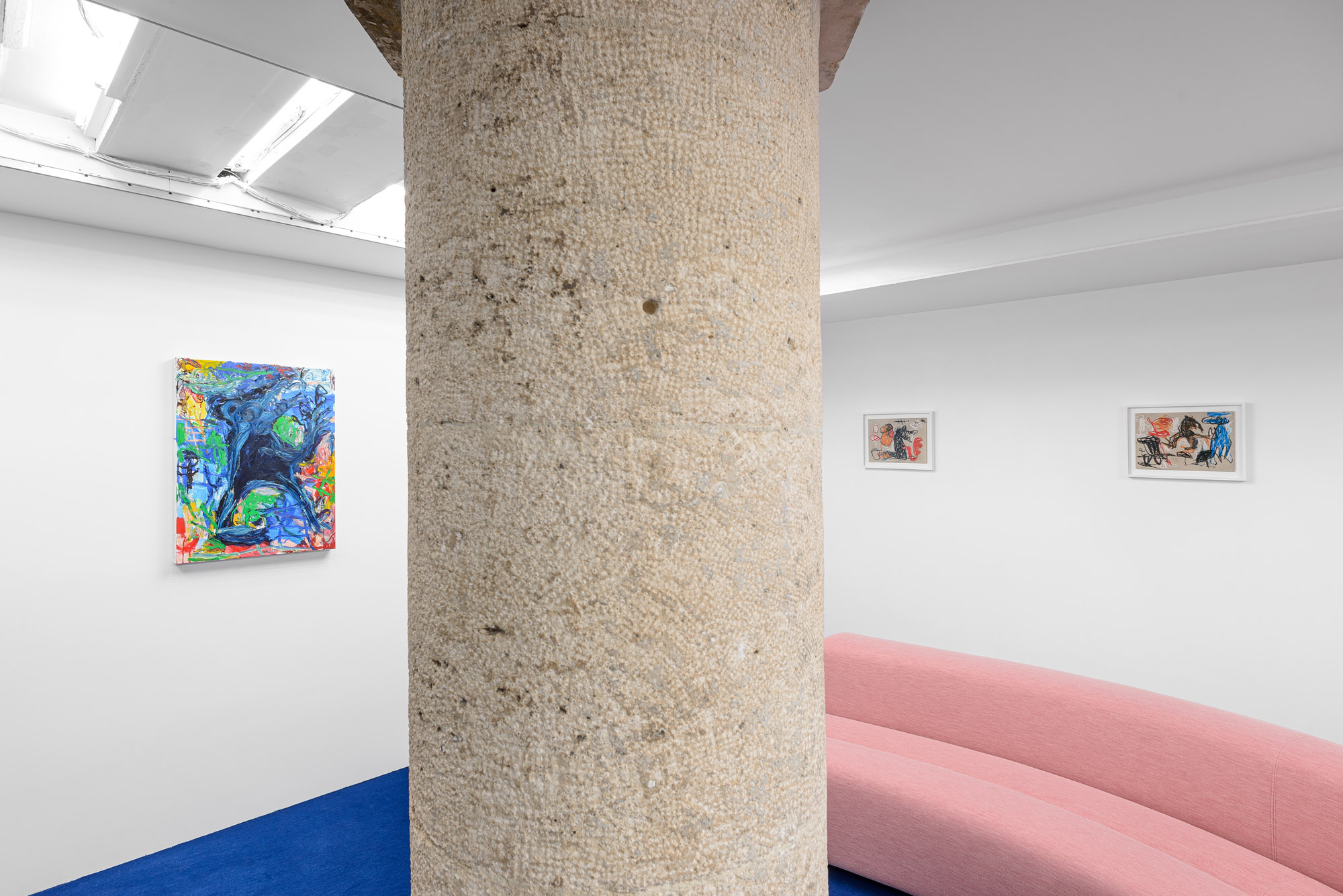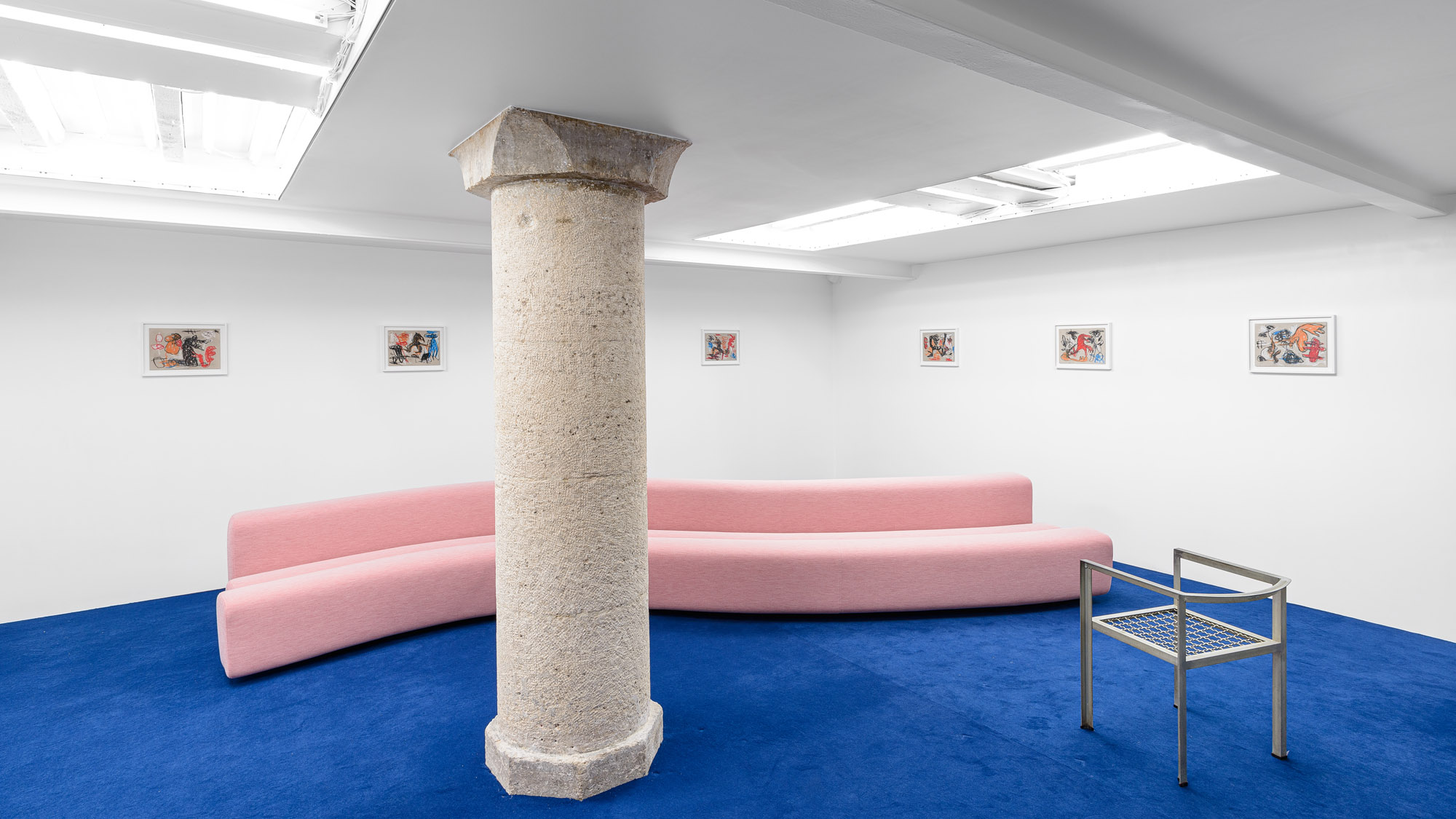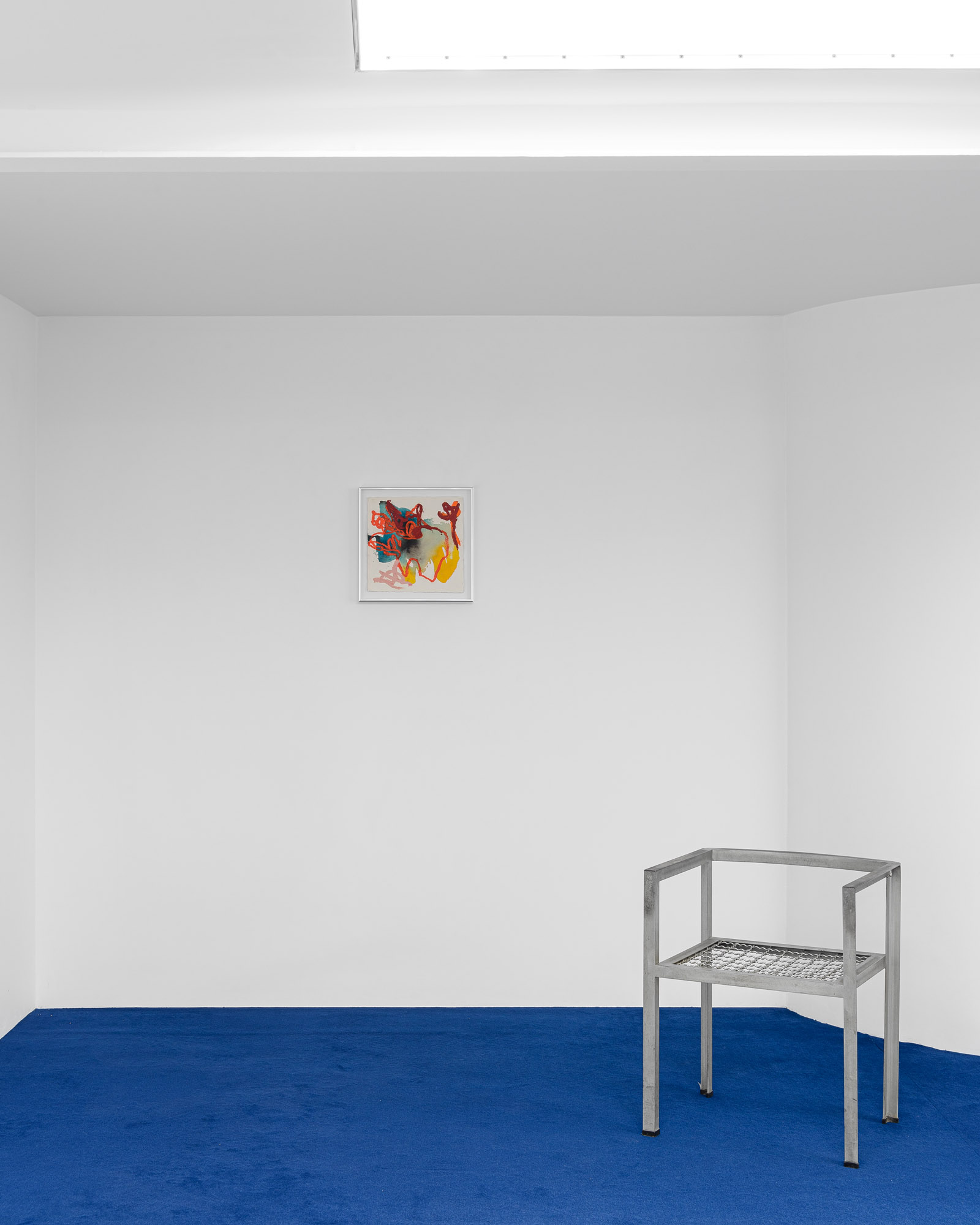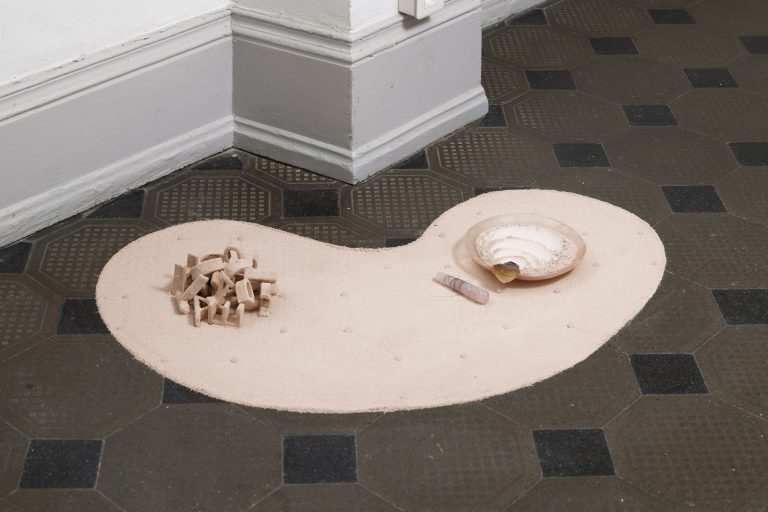Artist: Julian Farade
Exhibition title: Where Do Birds Go At Night?
Venue: Galerie Derouillon, Paris, France
Date: September 6 – October 1, 2022
Photography: Grégory Copitet / all images copyright and courtesy of the artist and Galerie Derouillon, Paris
“I’ve dreamt of a preface that would be like the prehistory for my book; that the first lights, the first images, the most important gestures would be gathered there, like in the moist darkness of a cave.”
Youri Johnson
When the task of writing about Julian Farade’s practice fell to me, I was frequently reminded of this phrase by Youri Johnson. Perhaps because Farade’s work has something in common with cave drawings, in that it seeks to tell a story using a new language. This text is like a preface to the exhibition. We are here in the dampness and the darkness of a cave that the fires of the works have come to bring to light.
The title-question “Where Do Birds Go at Night?” opens the exhibition like the beginning of a story. There is no answer, no end to this question, which is cast like a spell. It draws us into the movement of these birds, who fly from canvas to canvas and mingle with symbols that respond to each other with a colourful vocabulary. Julian Farade moves away from the symbols and meanings culturally associated with the colours to rediscover their primordial, physical, and visual effect. Line and colour are inseparable in his practice: by adding one colour on top of another, the figures gradually emerge from one another. Numerous textures and materials also appear on the canvas: ink and coffee drip, flat areas of oil or scratched surfaces give a physical presence to the symbols. The repetition of the gesture is fundamental for examining every corner, including the dead ends that lead to the errors that Farade likes to make visible and whose effects he integrates before taking the canvas on.
There is a ritualistic dimension in the drawn lines, which are summoned by hand and which is intimately associated with drawing and writing. Recurring signs can be found from one work to the next: nest-cloud-shelter, ladder-barrier, eggs-grape-key, hand-trident-flower-fork. These hybrids, between grapheme and drawing, between symbol and hieroglyph, play on the variations of a form that then takes on new meanings, like the primitive aleph builds an A from an ox’s head. Farade returns with the doll that occupies the exhibition to the etymological link between text and fabric, the interweaving, the network of relationships that create its “texture”. This creature, whose knots articulating its limbs echo the lines of the drawing, is not a three-dimensional embodiment of the symbols which exist on the canvases, but acts more like an intermediary fetish containing the energies of creation, almost like a voodoo doll.
Julian Farade’s painting requires time to be tamed and for the symbols to reveal themselves, to allow us to read the traces from which relationships are made. As writing, Michel Serres says, is the trait of all living beings who all write “on things and between them, the things of the world on each other ” Birds write the land with their songs, drops of water write on the walls of a cave, colour writes on the canvas. It is this history in the form of folds which interests Julian Farade. He tries to stay away from the abstract/figurative, colour/drawing, image/object dualisms to learn to pay attention to the very enigma of painting. That which moves us and marks us while evading us – everything that is played out in the hollow of the question mark. It is perhaps in the heart of this primitive and comforting cave that the birds gather at night.
-Marion Coindeau


